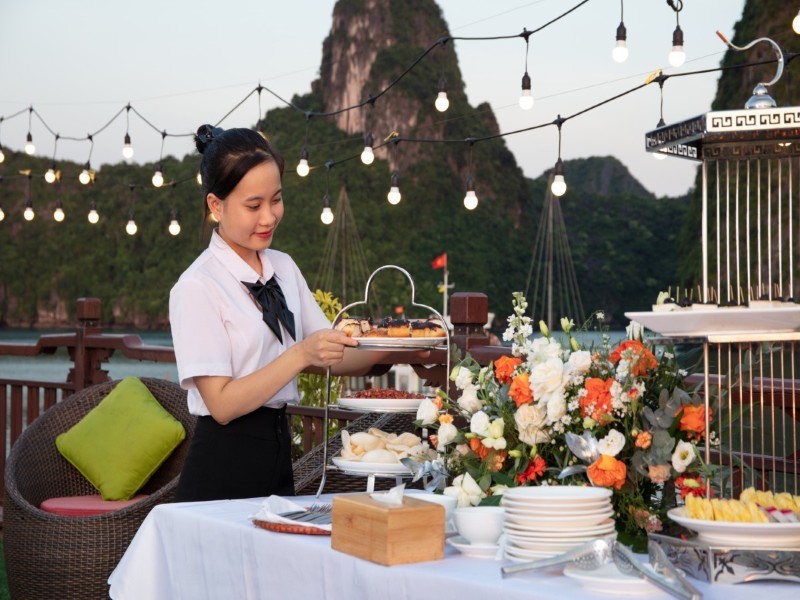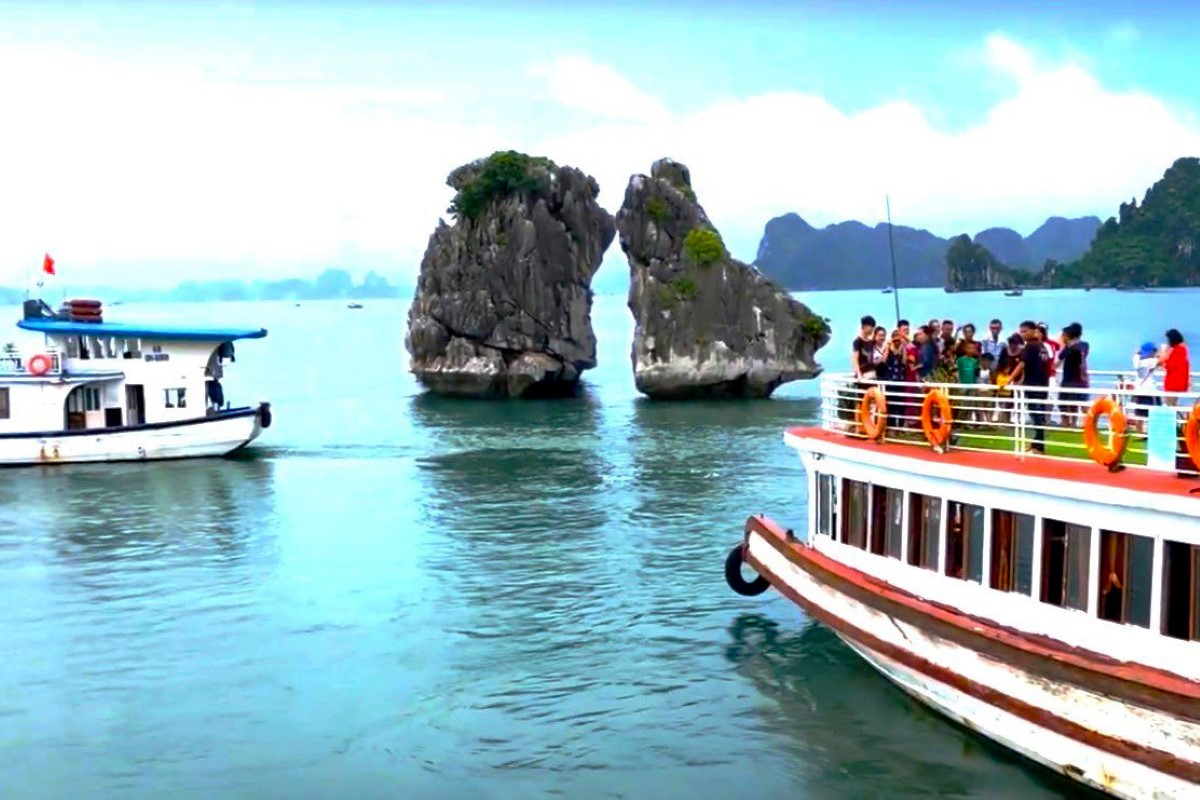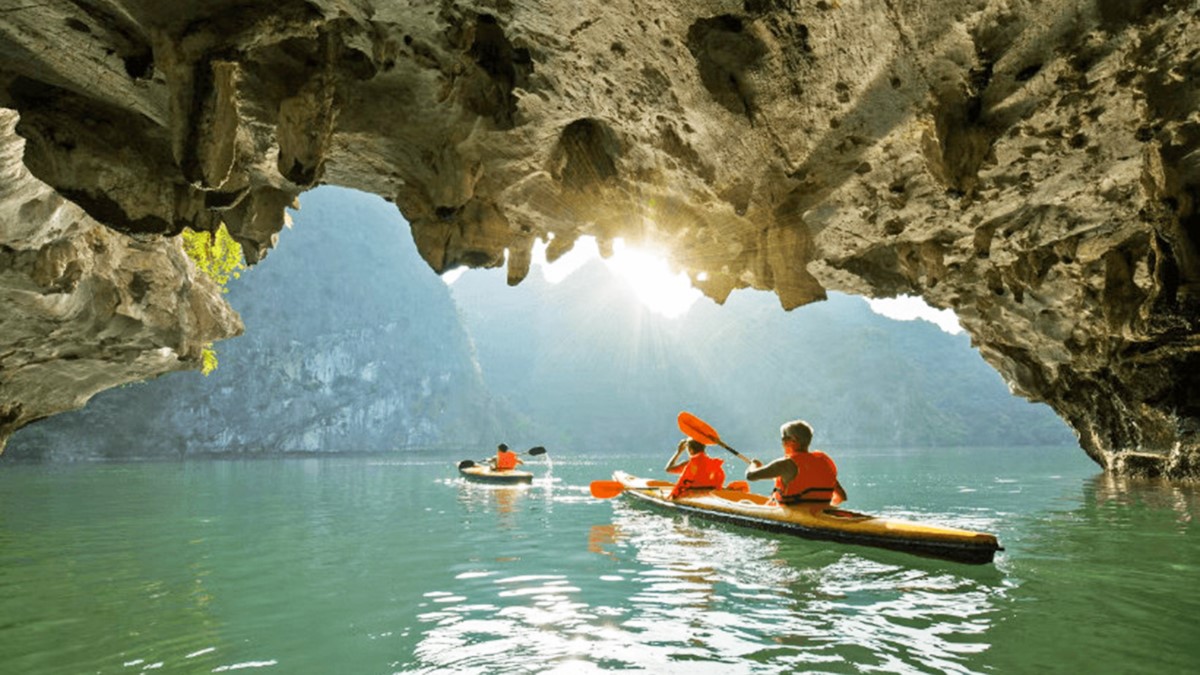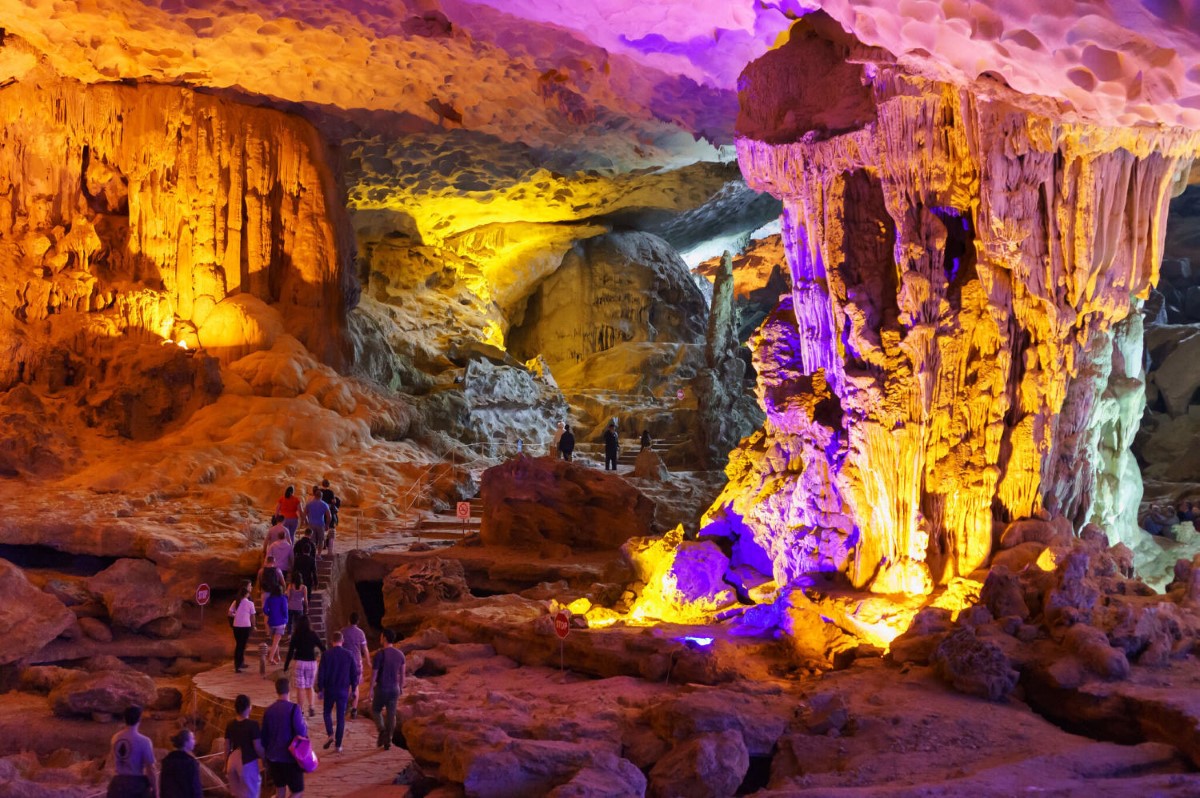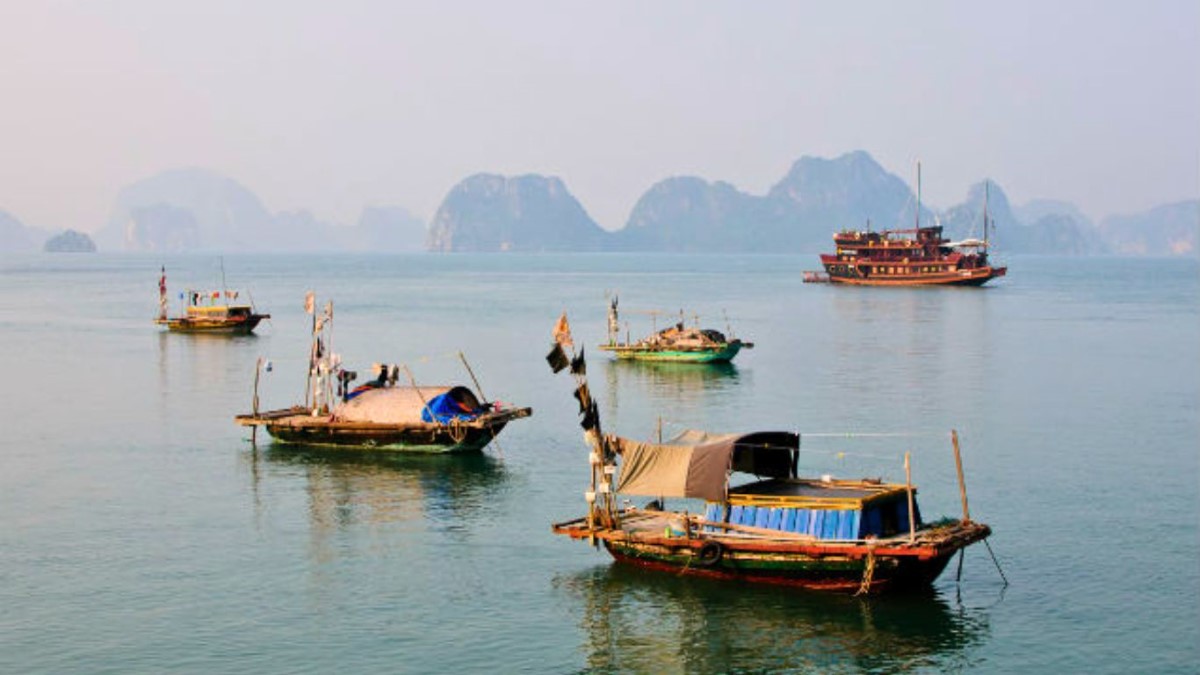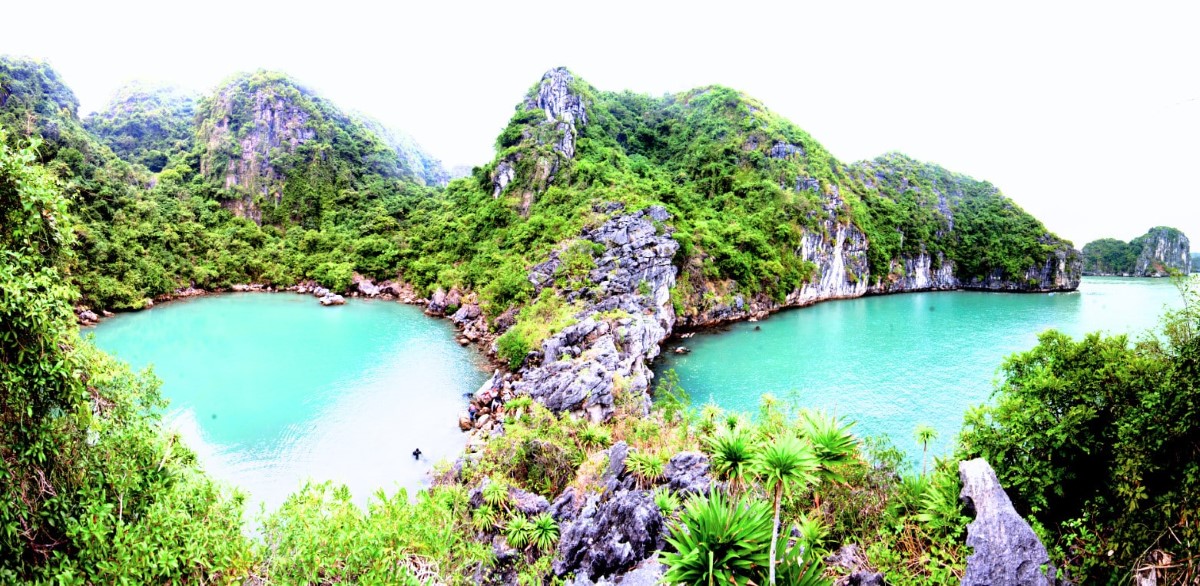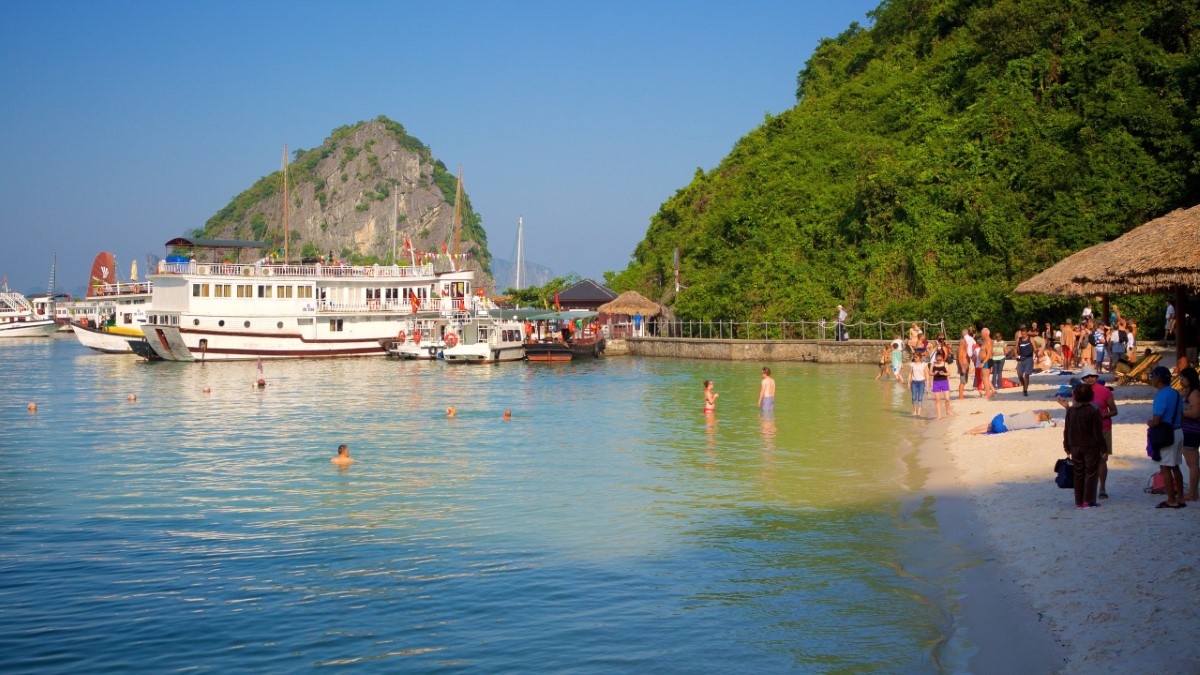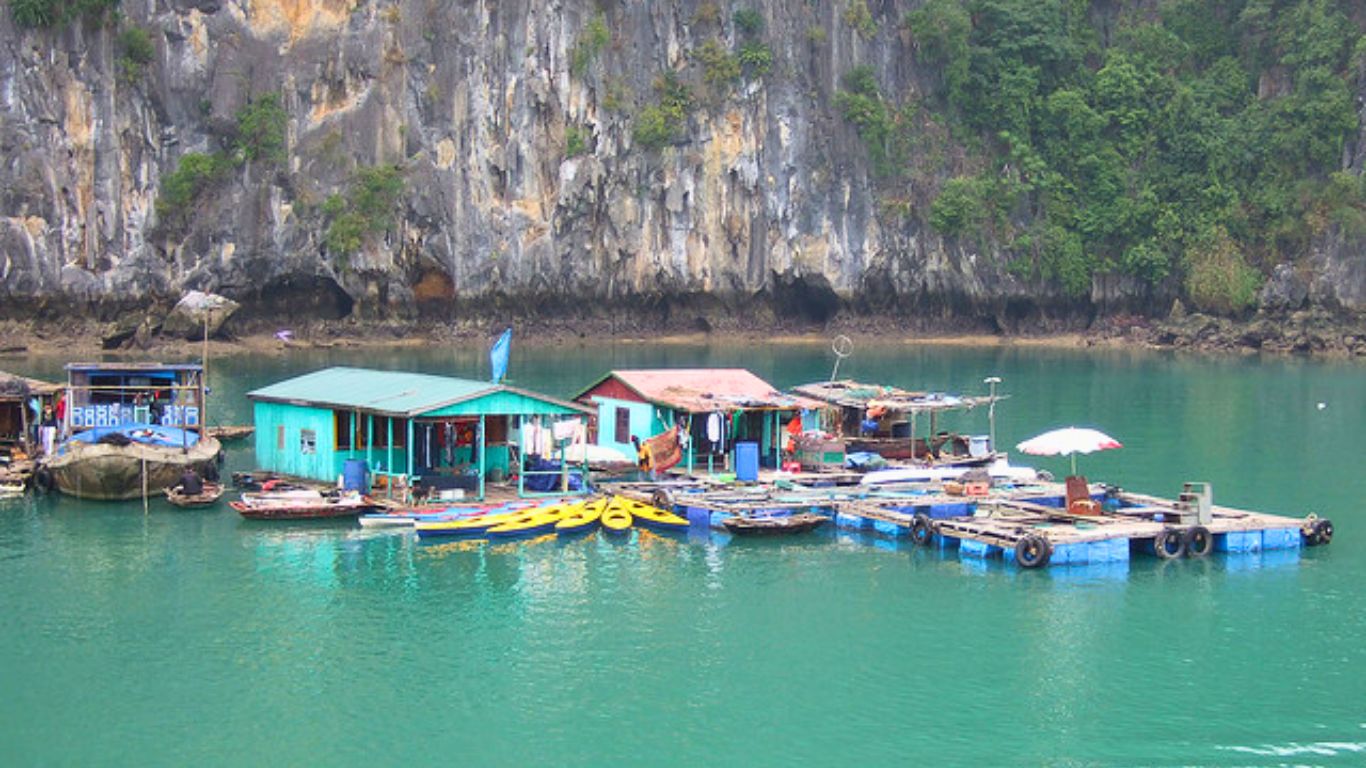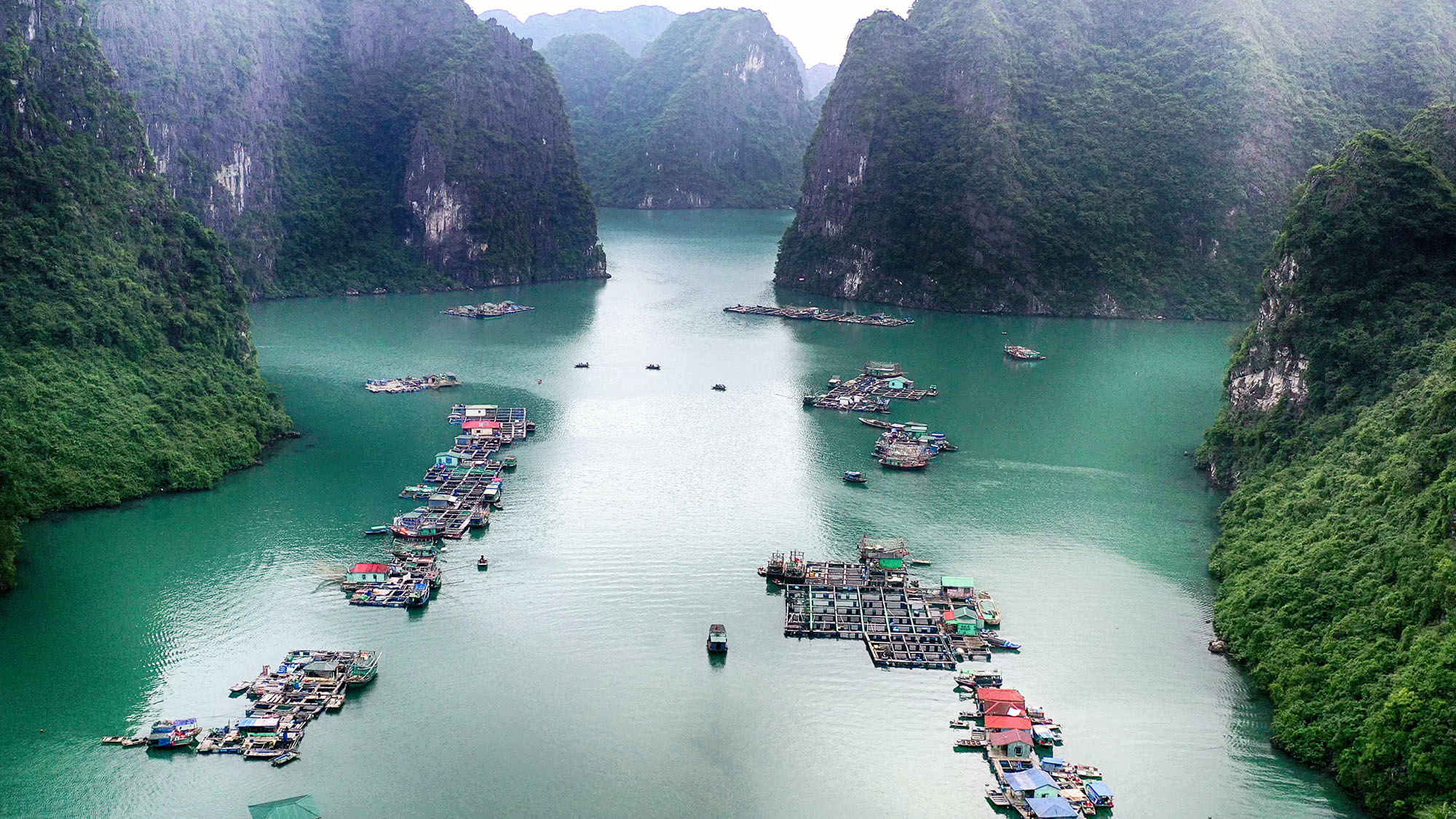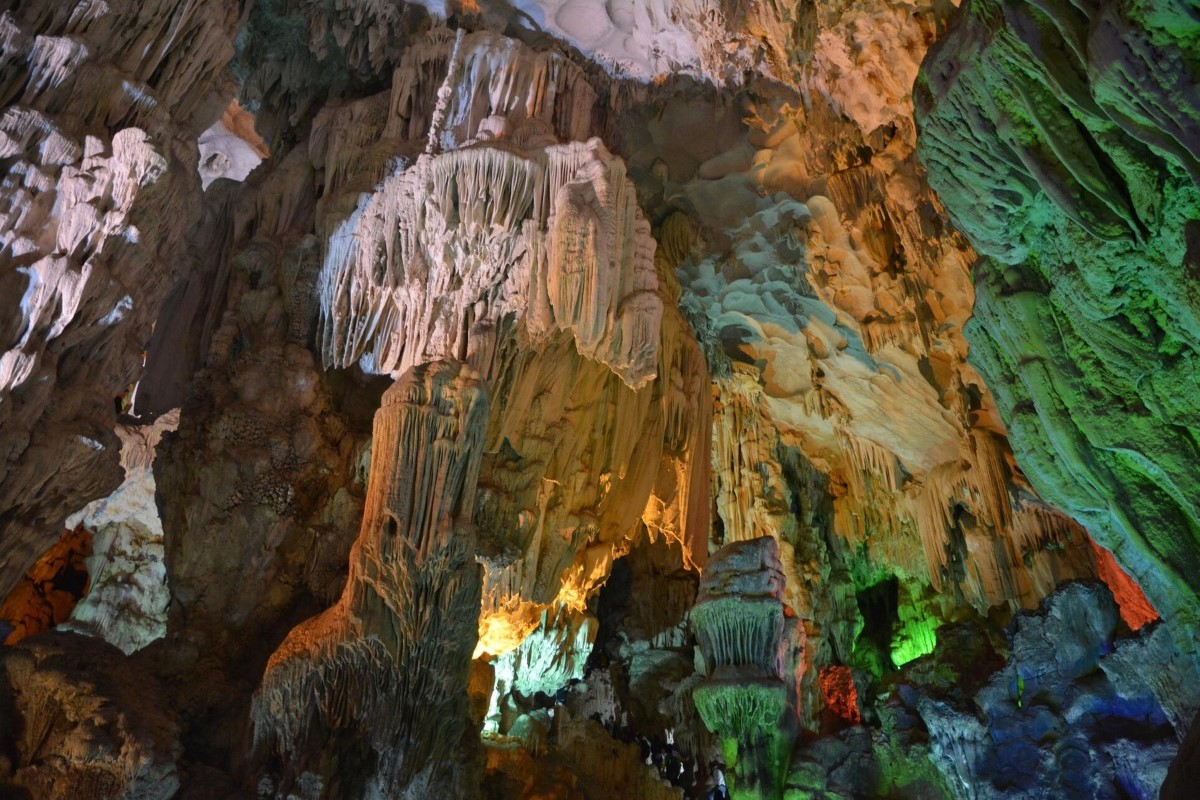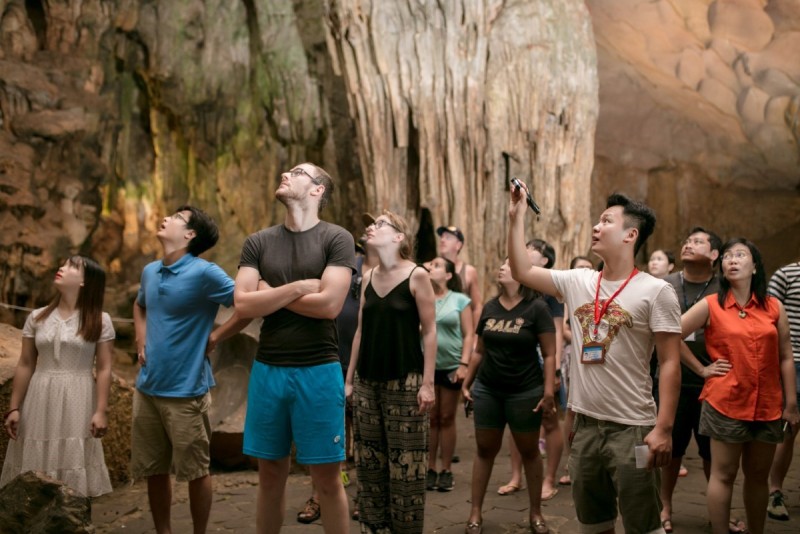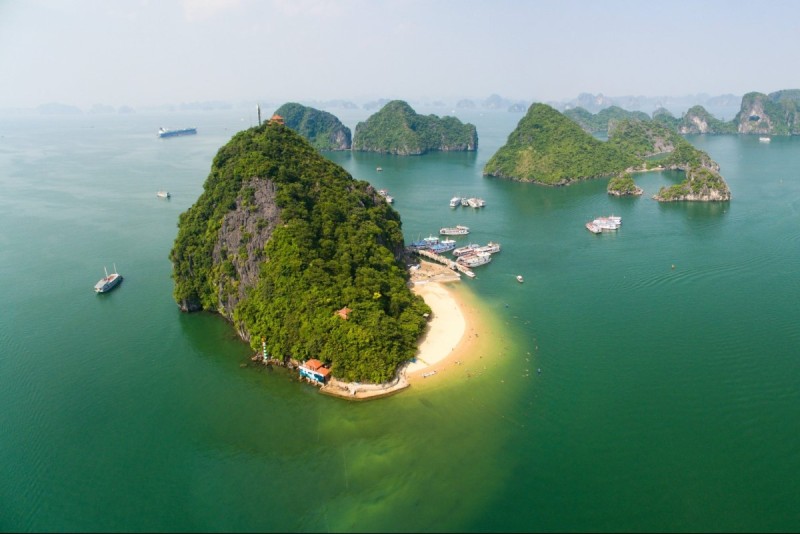Dinh Huong Islet Halong Bay Complete Travel Guide & Visitor Tips
Dinh Huong Islet is a striking limestone formation in Halong Bay, known for its unique incense burner shape and cultural significance. It offers visitors scenic views on popular cruises and features prominently on Vietnam’s 200,000 VND banknote, symbolizing national pride and natural beauty.
At a Glance: Dinh Huong Islet Halong Bay
Floating silently among the emerald waters of Halong Bay, Dinh Huong Islet (Hòn Đỉnh Hương) is one of the bay's most iconic limestone formations. Known for its incense burner shape and spiritual symbolism, this solitary islet is a must-see stop on most Halong cruise routes. Here’s everything travelers need to know at a glance.
- Official Name: Dinh Huong Islet (Hòn Đỉnh Hương)
- Type of Place: Limestone islet
- Location: Tuần Châu Ward, Hạ Long City, Quảng Ninh Province, Northeast Vietnam
- Unique Appeal: A naturally sculpted rock resembling a ceremonial incense burner, featured on Vietnam’s 200,000 VND banknote
- How to Get There: Only accessible by boat via Halong Bay cruises departing from Tuan Chau Marina or Bai Chay Wharf
- Visit Duration: Typically viewed for 10–15 minutes as part of a cruise itinerary
- Best Time to Visit: October to April, when skies are clearer and seas calmer for optimal viewing and photography
- Entry Fee: Included in the price of most Halong Bay cruise packages
- Accessibility: Reachable only by boat; not suitable for docking or visitors with mobility limitations
- Top Activities:
- Scenic viewing from cruise deck
- Sunrise or sunset photography
- Kayak approach on select private charters
- Learning about the islet’s spiritual and cultural symbolism
- Spotting it on the Vietnamese 200,000 VND note
- Responsible Travel Tip: Avoid using single-use plastics on your cruise and never throw trash into the bay
- Fun Fact: Locals believe the islet symbolizes a spiritual offering to the sea and ancestors, bringing luck to those who pass it
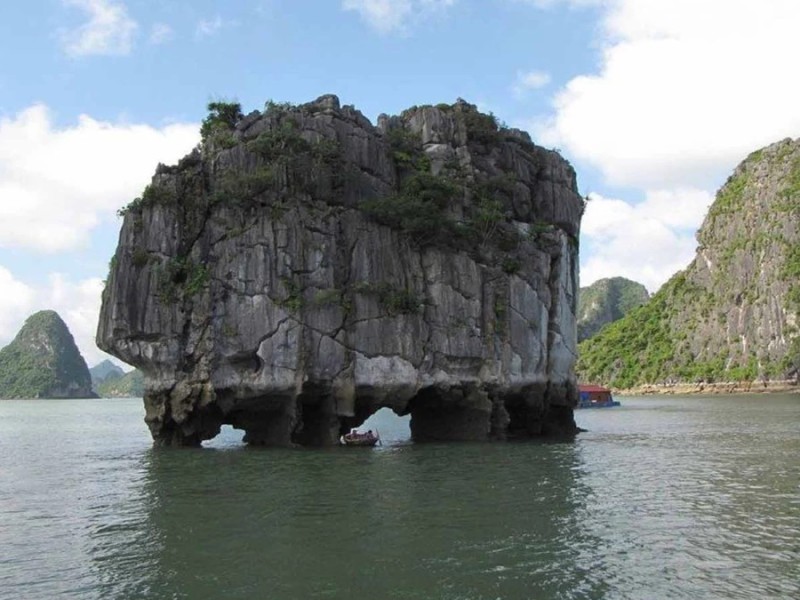
Get to Know Dinh Huong Islet
Dinh Huong Islet is a captivating limestone formation nestled in the heart of Halong Bay, renowned for its distinctive shape and cultural significance. Positioned among thousands of karst towers, this islet stands out as a unique natural landmark, drawing visitors eager to explore its beauty and symbolism. Whether you're curious about its location or its famed appearance, understanding Dinh Huong Islet sets the perfect tone for your Halong Bay adventure.
Explore more about what makes Dinh Huong Islet special and where exactly you can find it on your next visit to Halong Bay.
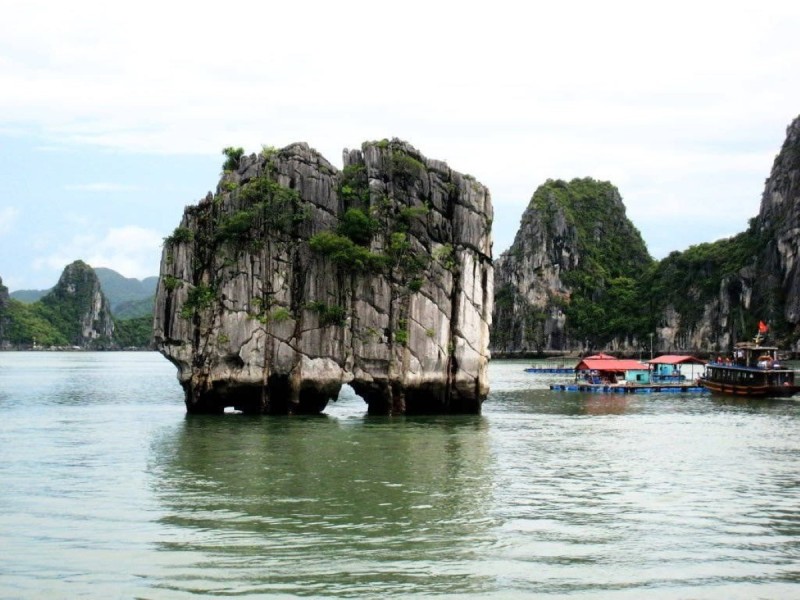
What is Dinh Huong Islet and where is it?
Dinh Huong Islet is a striking limestone karst formation located in Halong Bay, part of the UNESCO World Heritage site celebrated for its breathtaking geological landscapes. Known for its “incense burner” shape, this natural monument lies relatively close to key departure points like Tuan Chau Marina and Bai Chay Wharf, making it easily accessible for visitors exploring the bay. Understanding its precise location helps travelers visualize their route and appreciate its significance among the many islets dotting the area.
Whether you’re planning a cruise or simply learning about Halong Bay’s geography, knowing exactly where Dinh Huong Islet is will enhance your appreciation of this iconic landmark.
Location in Halong Bay and key geographic coordinates
Visually stunning and naturally iconic, Dinh Huong Islet is classified as a karst tower within the UNESCO World Heritage site of Halong Bay. It stands approximately 7 kilometers from Tuan Chau Marina and about 9 kilometers from Bai Chay Wharf. This proximity makes it a common highlight on many popular cruise routes. Visitors can find detailed maps marking the islet’s position relative to nearby attractions such as Thien Cung Cave and Dau Go Cave, enhancing navigational ease. Its coordinates place it firmly among the most recognized natural landmarks within the bay’s vast geography.
For travelers eager to pinpoint its location, these details offer clarity and ease in planning your visit.
Nearby landmarks and cruise routes that pass by the islet
Several well-known cruise routes in Halong Bay include a scenic pass by Dinh Huong Islet, such as Route 1 and Route 5, which showcase the bay’s most iconic sites. Travelers aboard these tours can also admire neighboring attractions like Thien Cung Cave, Dau Go Cave, and Ga Choi Islet. Knowing which cruises cover these highlights helps visitors optimize their itinerary to experience the best views and photo opportunities in one trip.
If you’re selecting a cruise, be sure to check whether the itinerary features Dinh Huong Islet along with these nearby marvels.
Overview of its size, shape, and notable physical features
The distinctive “incense burner” shape of Dinh Huong Islet sets it apart from the many limestone formations in Halong Bay. Its four “legs” rising from the water support a flat “plate” on top, creating a striking silhouette that’s easily recognizable. The islet measures approximately 20 meters in height and 15 meters across at its widest point. Made of weathered limestone, the surface displays visible erosion patterns that tell the story of millions of years of natural shaping by wind and water.
This unique form not only offers stunning views but also connects deeply to Vietnamese culture and local folklore.
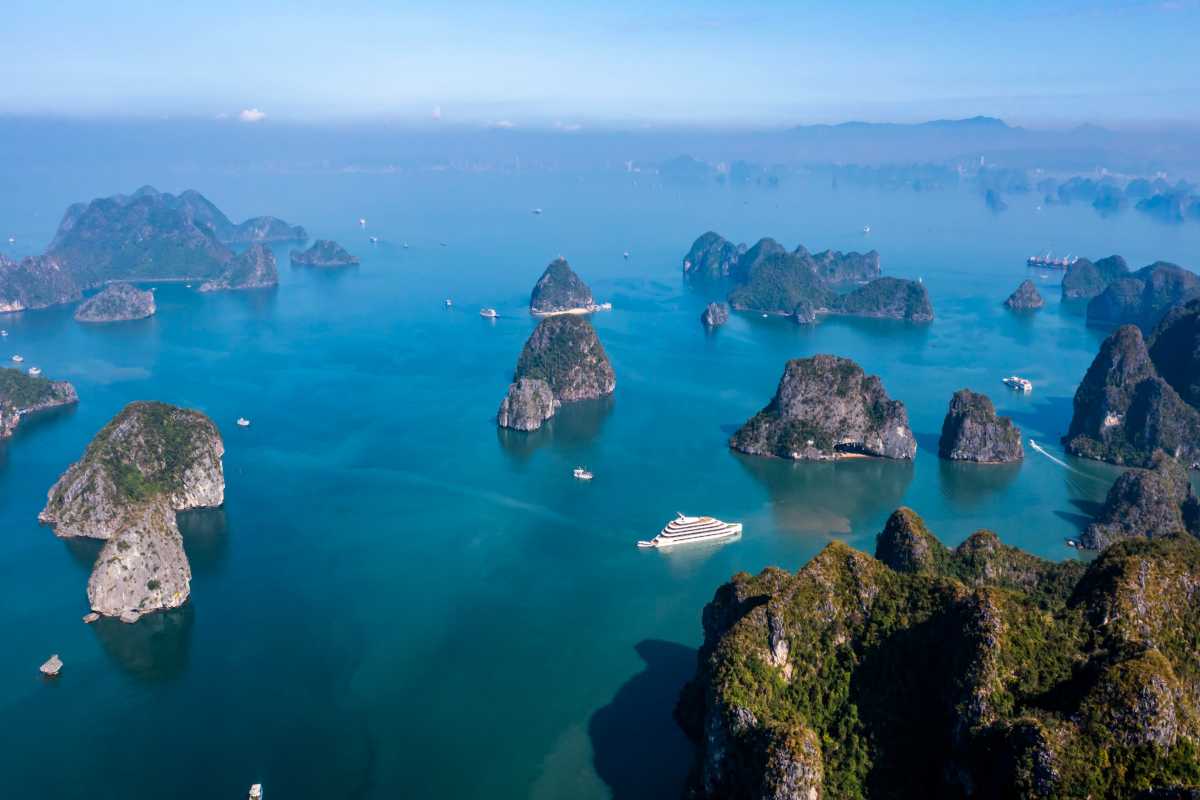
Why is it called the "Incense Burner Islet"?
The name "Incense Burner Islet" comes from the islet’s striking resemblance to a traditional Vietnamese incense burner, an item deeply embedded in the country’s cultural and spiritual life. This unique shape makes it instantly recognizable and symbolic. The islet’s form reflects the four “legs” and a flat “plate” on top, much like the incense burners used in Vietnamese homes for ancestor worship and spiritual rituals. This connection to a household and religious object enriches the meaning of the islet far beyond its natural beauty, turning it into a symbol of reverence and peace within the Vietnamese cultural landscape.
Understanding why it is called the "Incense Burner Islet" allows you to appreciate the intertwining of nature and culture that makes Dinh Huong Islet so special.
Symbolism of the incense burner in Vietnamese culture
The traditional Vietnamese incense burner holds profound significance in spiritual and cultural practices. It is a sacred object used in ancestor worship, offering a place to burn incense sticks during festivals, prayers, and family ceremonies. The smoke rising from the burner symbolizes respect, connection to ancestors, and the presence of peace and reverence in Vietnamese homes. This symbolism perfectly parallels the shape of Dinh Huong Islet, making the natural landmark not just a geological wonder but also a cultural emblem of spiritual offering and tranquility.
This cultural context adds depth to your visit, revealing the layers of meaning behind the islet’s shape and its name.
How its shape inspired the local and official name
The story of how Dinh Huong Islet earned its name is rooted in local tradition and folklore. Early fishermen and explorers noticed the islet’s distinct silhouette, reminiscent of the incense burners common in Vietnamese households. This striking resemblance inspired the islet’s name, which later gained official recognition as a beloved symbol within Halong Bay. The transition from local nickname to formal designation reflects the deep connection between the natural landscape and cultural identity, preserving the islet’s legacy for generations to come.
Learning this tale helps you appreciate the human stories that connect people to their environment.
Appearance on the 200,000 VND banknote
Dinh Huong Islet holds the distinct honor of appearing on the 200,000 Vietnamese Dong banknote, a testament to its status as a national symbol. The islet’s image is prominently featured, symbolizing the beauty and cultural importance of Halong Bay throughout Vietnam. This placement on currency cements its role as an icon recognized by the entire country, not only for its natural splendor but also for its embodiment of national pride and heritage.
Seeing the islet on the banknote underscores the deep reverence and value placed on it by the Vietnamese people.
What makes it iconic in Halong Bay?
Dinh Huong Islet stands out as one of the most iconic landmarks in Halong Bay, recognized for its unique and instantly recognizable silhouette. Amidst the thousands of limestone formations dotting the bay, this islet captures attention with its distinctive “incense burner” shape that symbolizes cultural heritage and natural beauty. Its prominence is reinforced by frequent mentions in tour routes and its widespread appearance in photographs, travel literature, and even on the 200,000 VND banknote. As a highlight of Halong Bay, it offers visitors a must-see experience that blends geological wonder with cultural symbolism.
This section will help you understand why Dinh Huong Islet deserves a top spot on your travel itinerary and what makes it unforgettable.
Scenic beauty and uniqueness compared to nearby islets
Dinh Huong Islet captivates with its symmetrical, incense burner shape, which sharply contrasts with the jagged and irregular forms of many nearby islets. Its balanced and elegant silhouette makes it one of the most photogenic spots in Halong Bay, drawing photographers and travelers alike. The islet’s limestone surface shows visible erosion patterns that add texture and character, while the gentle greenery atop adds a splash of color against the blue waters. This unique combination of form and setting distinguishes it clearly amid the bay’s vast karst landscape.
Understanding the visual allure of Dinh Huong Islet enhances your appreciation of why it remains a favorite for capturing unforgettable views.
Its popularity among photographers and tour operators
Many photographers prize Dinh Huong Islet as a top photo opportunity on their Halong Bay tours. Its distinctive shape and central location make it a standard highlight on most cruise itineraries. Tour operators often emphasize passing by the islet during optimal light conditions, ensuring visitors have ample chance to capture the perfect shot. Whether on group tours or private charters, guests consistently note the islet as a favorite scenic stop. Understanding its popularity helps travelers plan for the best photo experiences on their cruise.
Cultural importance to locals and cruise guides
Locals and cruise guides hold Dinh Huong Islet in high regard for its cultural and spiritual significance. Many guides share stories passed down through generations that highlight the islet’s symbolic role as a protector and spiritual beacon within Halong Bay. Fishermen often regard it as a lucky charm for safe passage and good fortune at sea. These anecdotes deepen visitors’ connection to the islet, enriching the travel experience with authentic local perspectives that go beyond scenic beauty.
Anya's First Glimpse: The Awe of Seeing the Islet for Myself
Most travel brochures paint a beautiful picture, but my recent journey through Halong Bay wasn't just about admiring stunning views; it was about experiencing a familiar national symbol come to life, proving that some wonders truly surpass every expectation. This wasn't just another scenic boat ride; it was a moment where a piece of Vietnamese identity, long held in my wallet, suddenly rose from the emerald waters, completely captivating me.
The air was thick with a humid warmth, a gentle sea breeze teasing my hair as our cruise boat glided smoothly over the bay's calm, jade-green surface. I'd seen Dinh Huong Islet countless times – on the 200,000 VND banknote, in glossy travel magazines, even on postcards. Each image promised beauty, but nothing prepared me for the quiet majesty of seeing it for myself.
As the boat rounded a bend, there it was, emerging from the misty haze like a guardian of the bay. My breath hitched. It was larger, more imposing, and somehow more vibrant than any photograph. The limestone, weathered by millennia, seemed to glow with a deep, earthy orange under the morning sun, contrasting starkly with the myriad shades of green in the water and the distant islands. I could almost hear the whispers of ancient winds that sculpted its distinctive 'incense burner' shape, standing proudly on its four sturdy legs. The faint scent of salt and damp rock hung in the air, a natural perfume that grounded me in the moment. It was profound, almost spiritual, seeing this icon not as a flat image, but as a living, breathing part of the landscape. A wave of pure, unadulterated joy washed over me, a silent testament to the raw, untouched beauty of Halong Bay. It didn't just meet my expectations; it effortlessly soared past them.
I learned that while many islets blend together, Dinh Huong demands attention due to its perfect symmetry and its cultural weight. Cruise routes are carefully planned to ensure passengers get a prime view, often looping around it slowly. Early morning light, just as the sun begins to pierce through any lingering mist, truly brings out its colors and reflections. Conversely, sunset offers a dramatic silhouette, each beautiful in its own way. Don't rush your photos; wait for the boat to find its perfect angle.
Actionable Practical Takeaways:
- Best Time to View: Aim for early morning or late afternoon on your cruise. The softer light enhances its colors and offers stunning reflections.
- Photography Tip: Be ready! The boat doesn't linger for long. Have your camera out and settings prepped. A zoom lens helps capture its details from a distance.
- Binoculars are Gold: Seriously, pack a pair. They allow you to appreciate the texture of the rock and any tiny patches of greenery far better than with the naked eye.
- Cultural Connection: Before you go, take a look at the 200,000 VND banknote. Seeing the islet in person after recognizing it from the currency adds a surprising layer of connection to Vietnam.
- Find Your Spot: Head to the upper deck of your cruise ship early to secure a railing spot for the best unobstructed views.
This islet isn't just a geological marvel; it's a profound cultural emblem, a silent guardian that embodies the spirit of Vietnam. The feeling of gliding past it, witnessing its stoic beauty, is something that will stay with you long after you've left the bay.
Recommendation: If you're planning a trip to Halong Bay, make sure your chosen cruise route includes a pass by Dinh Huong Islet. It's more than just a photo opportunity; it's a moment of connection, a living piece of Vietnamese art, and an experience that truly defines the magic of the bay. Don't just see Halong Bay; truly feel it through the presence of Dinh Huong.
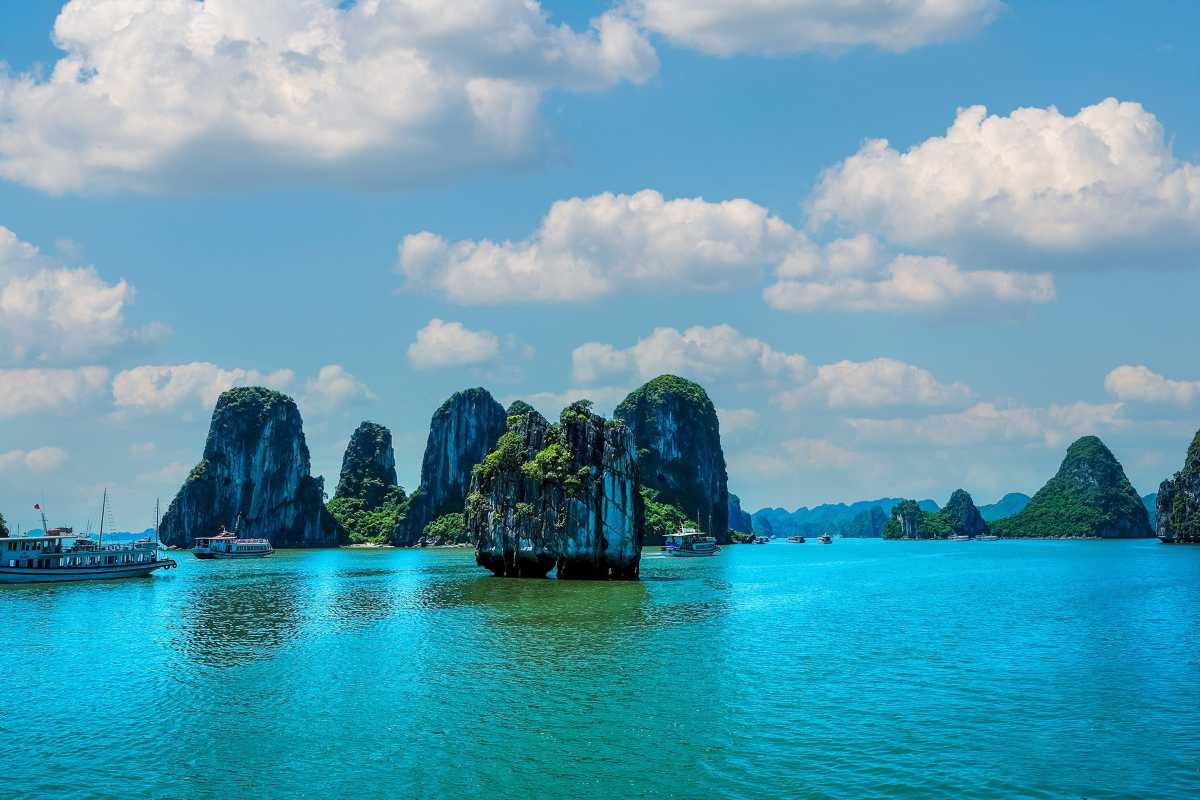
Get to Know Dinh Huong Islet
Dinh Huong Islet is a captivating limestone karst formation located in the heart of Halong Bay, Vietnam. Known for its unique shape resembling an incense burner, it stands out among the thousands of islets scattered across the bay. This iconic natural landmark is part of the UNESCO World Heritage site recognized for its outstanding geological and cultural significance. Positioned near popular departure points like Tuan Chau and Bai Chay, it’s a must-see for travelers seeking to experience the best of Halong Bay’s natural beauty and heritage.
Start your journey here and discover why Dinh Huong Islet remains a beloved symbol of the bay’s stunning geography.
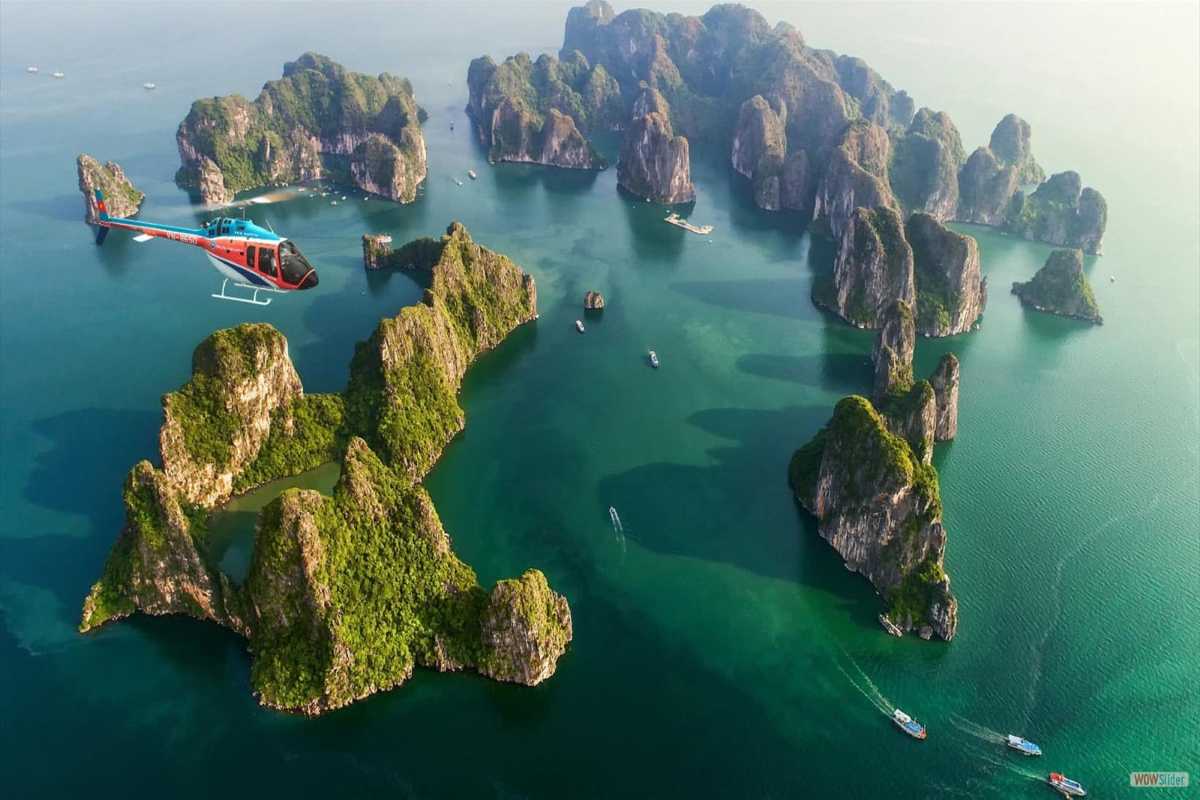
What is Dinh Huong Islet and where is it?
Dinh Huong Islet is a distinct karst tower located within the famed Halong Bay, part of Vietnam’s UNESCO World Heritage Site. This natural limestone formation rises dramatically from the emerald waters, serving as a prominent landmark for visitors cruising the bay. Positioned conveniently near Tuan Chau Marina and Bai Chay Wharf, it is easily accessible on many popular tour routes. Its geological classification as a karst tower highlights the dramatic erosion and tectonic processes that shaped the bay’s unique landscape.
Understanding exactly where Dinh Huong Islet sits in Halong Bay will help you plan your visit and appreciate its significance among the bay’s many wonders.
Location in Halong Bay and key geographic coordinates
The visual impact of Dinh Huong Islet is striking as it rises from the waters of Halong Bay. Classified as a karst tower, it forms part of the intricate limestone landscape that defines the bay’s UNESCO World Heritage status. The islet is located approximately 6 kilometers from Tuan Chau Marina and about 8 kilometers from Bai Chay Wharf, making it an accessible and popular stop for boat tours. Travelers can find detailed maps marking Dinh Huong Islet’s location, often highlighted in guides and digital apps focused on the bay’s geography. It sits near other well-known formations such as Thien Cung Cave and Dau Go Cave, offering a rich itinerary for visitors.
Knowing the exact location of Dinh Huong Islet helps visitors orient themselves and plan their route through Halong Bay efficiently.
Nearby landmarks and cruise routes that pass by the islet
Several popular cruise routes through Halong Bay include Dinh Huong Islet as a key highlight. For example, Route 1 and Route 5 are well-known itineraries that pass close to the islet, offering stunning views and photo opportunities. Along these routes, travelers can also visit famous spots like Thien Cung Cave, Dau Go Cave, and Ga Choi Islet, adding variety to the sightseeing experience. Knowing which cruises incorporate Dinh Huong Islet allows visitors to select the perfect itinerary that balances geological wonders with cultural attractions.
Planning your cruise with these routes in mind will help you make the most of your Halong Bay visit.
Overview of its size, shape, and notable physical features
Dinh Huong Islet is famous for its distinctive shape that resembles a traditional incense burner, complete with four "legs" supporting a "plate" or "top." This unique form rises approximately 30 meters above the bay’s waters, showcasing limestone that bears the marks of natural erosion over centuries. The karst formation reveals patterns of weathering, with patches of greenery adding contrast to the rocky surface. Understanding its size and shape helps visitors appreciate why this islet stands apart visually among the many formations in Halong Bay.
Knowing these physical features enhances your connection to the islet’s natural artistry.
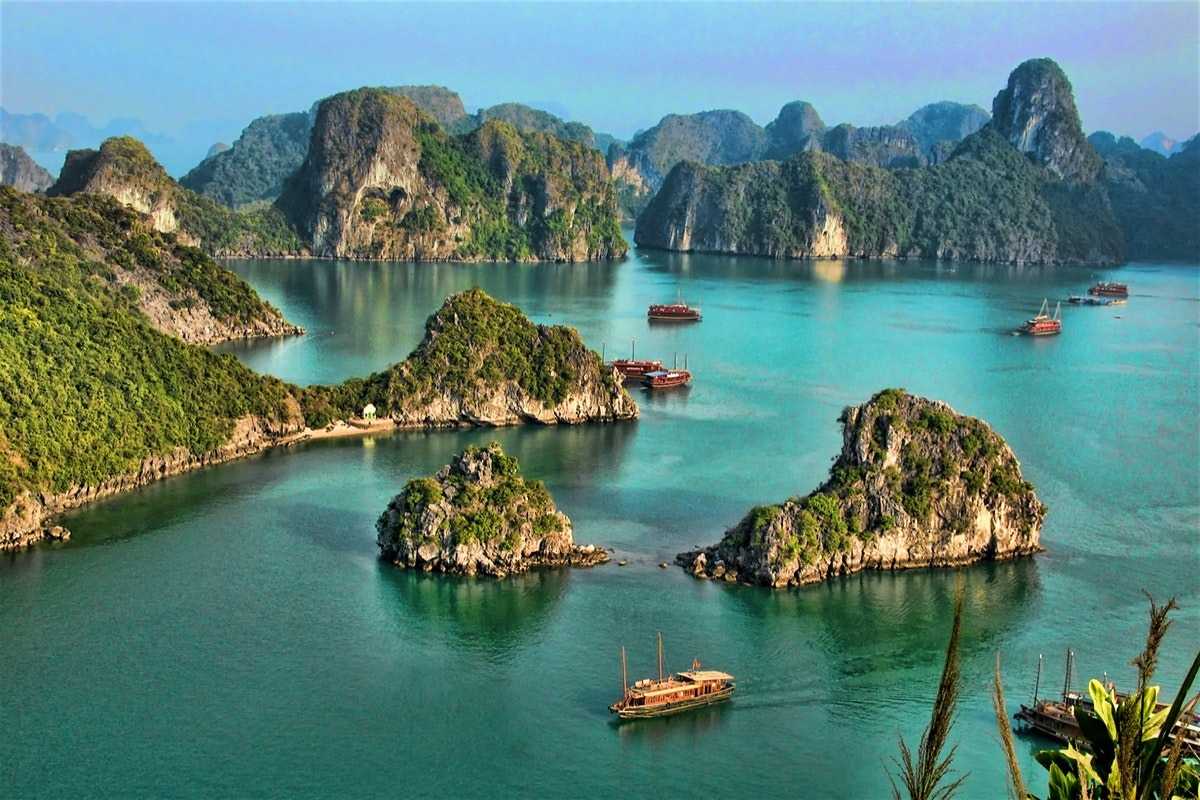
Cultural tales and spiritual beliefs
Dinh Huong Islet mythology weaves a rich tapestry of folklore deeply rooted in Vietnam's cultural heritage. For centuries, local communities in Halong Bay have passed down stories that imbue the islet with spiritual significance. These narratives often highlight the islet as a guardian of the bay, embodying protective powers and ancestral reverence. Through these cultural tales, the islet is not only a natural wonder but also a sacred symbol that connects visitors to the spiritual heart of the region.
Exploring the mythology of Dinh Huong Islet invites you to see beyond its limestone form and appreciate its place in the local worldview and traditions.
Local legends surrounding the islet's spiritual protection
Rich local legends portray Dinh Huong Islet as a sacred protector of Halong Bay. One popular tale speaks of ancient dragons and deities guarding the waters, with the incense burner shape symbolizing a sacred offering to maintain peace and prosperity. These stories frame the islet as a spiritual guardian, revered in traditional rituals and believed to shield fishermen and sailors from harm. Such folklore enhances the islet’s mystique and underscores its cultural depth.
These legends offer a window into the spiritual landscape of Halong Bay, enriching your visit with meaningful context.
How fishermen view it as a symbol of luck
For generations, fishermen in Halong Bay have regarded Dinh Huong Islet as a lucky charm. The islet’s presence is thought to bring safe passage, bountiful catches, and guidance through the bay’s sometimes treacherous waters. Rituals and superstitions linked to the islet often involve offerings and prayers before setting sail. This cultural belief highlights the deep respect locals have for natural landmarks and their spiritual power within daily life.
Understanding these customs enriches your appreciation of local maritime culture.
Role in traditional seafaring practices and rituals
Historically, Dinh Huong Islet has held importance in traditional Vietnamese seafaring. Sailors often performed rituals such as offerings to the islet before embarking on voyages, seeking protection and favorable conditions. The islet served as a natural navigational marker, guiding boats safely through the bay. These maritime customs underline the islet’s enduring role beyond its geological presence, embedding it deeply within the cultural practices of Halong Bay’s coastal communities.
This connection between natural landmarks and cultural rites reveals the islet’s layered significance.
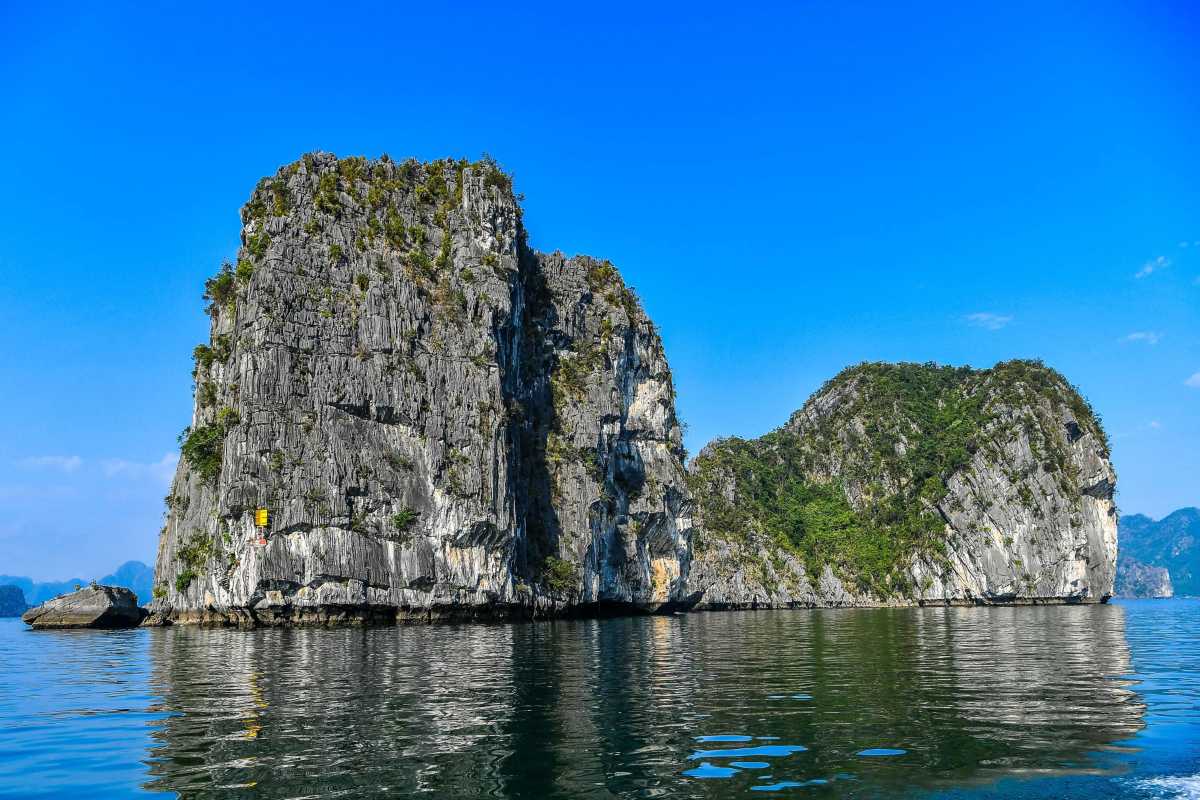
UNESCO recognition and national symbolism
Dinh Huong Islet UNESCO status highlights its importance not only as a natural wonder but also as a globally recognized heritage site. As part of the UNESCO World Heritage designation for Halong Bay, the islet contributes to the bay’s outstanding universal value, celebrated for its unique geological formations and breathtaking beauty. This recognition safeguards the islet and the surrounding ecosystem, emphasizing its role in cultural preservation and environmental conservation.
Acknowledging this status deepens your appreciation of the islet’s significance on both international and national levels.
Its place in Halong Bay’s World Heritage Site designation
The designation of Halong Bay as a UNESCO World Heritage Site underscores the global importance of this region. Dinh Huong Islet plays a vital role in this heritage, representing one of the bay’s many striking karst formations. UNESCO recognition involves protecting sites with “outstanding universal value,” and Dinh Huong contributes through its unique geological features and scenic presence. This status helps preserve the islet for future generations and promotes responsible tourism.
Understanding the heritage status enhances your respect for the area and its conservation efforts.
Representation of Vietnamese heritage and visual identity
Beyond its natural beauty, Dinh Huong Islet is an enduring symbol of Vietnamese heritage and pride. Its image appears not only on the 200,000 VND banknote but also throughout cultural representations celebrating the country’s identity. The islet embodies the spirit of Halong Bay, reinforcing national pride and attracting visitors who seek to connect with Vietnam’s cultural landscape. This visual identity cements the islet’s role as a treasured icon beyond just tourism.
Recognizing this cultural symbolism adds depth to your visit, linking nature with heritage.
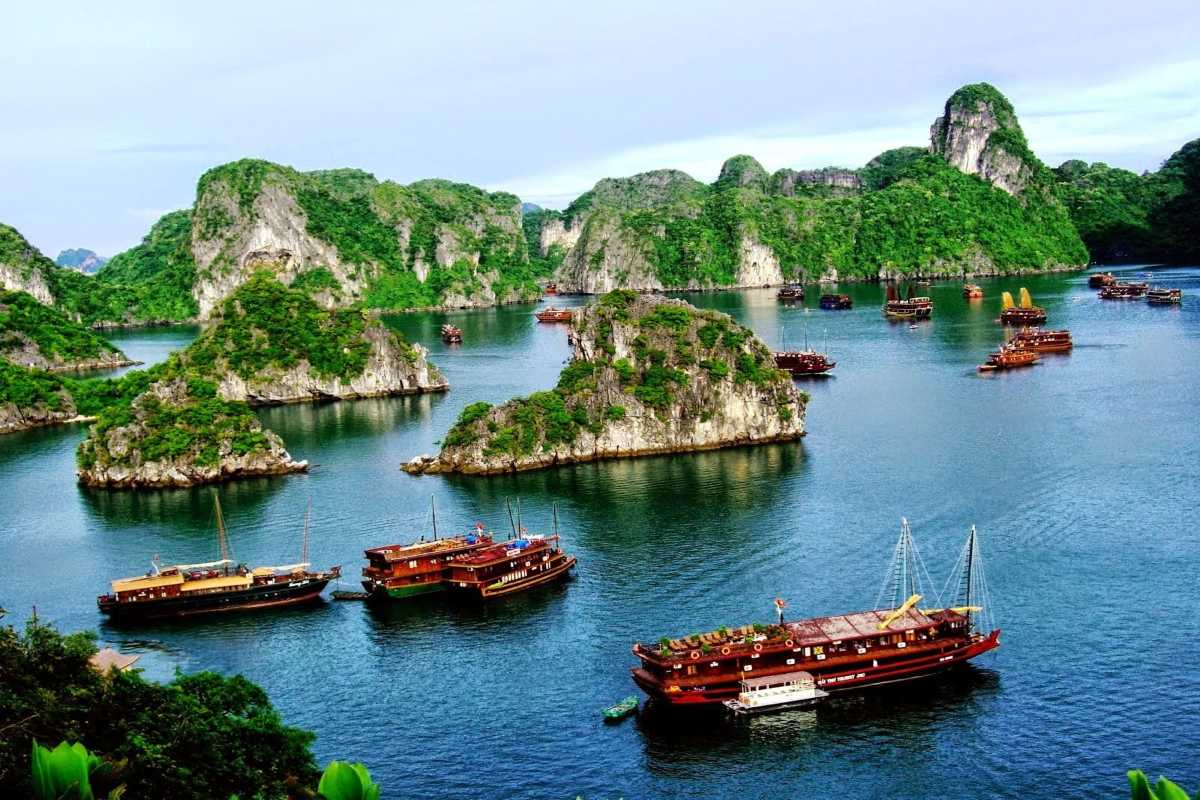
Planning Your Perfect Dinh Huong Islet Experience
Planning your visit to Dinh Huong Islet involves understanding the best ways to experience this iconic part of Halong Bay. Whether you're deciding how to get there, when to go, or what to bring, this section offers clear, practical advice to help you create a smooth and memorable trip. With a variety of cruise options and travel logistics, you’ll be ready to explore confidently.
To make the most of your Dinh Huong Islet experience, consider these insights as you plan your journey.

Choosing the Right Cruise for Dinh Huong Islet Views
Selecting the best cruise is key to enjoying your Dinh Huong Islet experience. Halong Bay offers a range of cruises—from group tours to luxury liners and private charters—each with different routes and amenities. Understanding these options helps you pick the cruise that matches your budget and preferences, ensuring stunning views of the islet and nearby attractions.
Consider the cruise type and route carefully to optimize your visit.
Daily departures from Tuan Chau Marina and Bai Chay Wharf
When planning your trip, knowing where to start is essential. Cruises depart daily from both Tuan Chau Marina and Bai Chay Wharf, each offering its own advantages. Tuan Chau Marina is the main hub for many luxury and private cruises, while Bai Chay Wharf often serves group tours and budget options. Typical departure times range from early morning, and it’s best to arrive at least 30 minutes before boarding.
Understanding these departure points helps you plan your arrival and travel connections smoothly.
Tour routes that include Dinh Huong (Route 1 and Route 5)
Several popular cruise routes in Halong Bay include Dinh Huong Islet. Route 1 is a classic itinerary passing by many famous caves and islands, offering great views of the islet. Route 5 is a longer route that also includes other key landmarks like Thien Cung Cave and Dau Go Cave. Both routes typically last half to full days, providing ample opportunities for sightseeing and photography.
Choosing the right route ensures you see Dinh Huong Islet in the best light.
Liam's Cruise Choice: Why I Picked a Mid-Range Overnight Tour for the Best Views
Choosing a Halong Bay cruise felt like navigating a maze. There were countless options: day trips that felt too short, super luxury options that were way out of my budget, and then the mysterious world of overnight cruises. My goal wasn't just to see Halong Bay, but to experience it, and specifically, to truly connect with the iconic Dinh Huong Islet beyond a fleeting glance. This deep dive led me to realize that a mid-range overnight tour would offer something truly special and different from the typical rush of a day tour.
My decision-making process started, as many do, with endless tabs open on my browser. I poured over reviews, scrolled through photos, and compared itineraries. Budget was a big factor, ruling out the top-tier luxury boats. But I also didn't want the cheapest option, fearing cramped quarters or a less-than-stellar experience. I was looking for a sweet spot – comfort, good food, and, most importantly, enough time on the bay to truly soak it all in, especially when it came to Dinh Huong Islet.
What really swayed me towards a mid-range overnight tour was the promise of seeing the bay in different lights, particularly around sunset and sunrise. Day tours just zip past Dinh Huong Islet, but I wanted more. I wanted to witness how the changing light played on its unique "incense burner" shape. I specifically looked for cruises that mentioned "Route 2" or "Route 3" in their itinerary, as these typically offered a more leisurely pace and often included a second pass by some of the iconic islets, Dinh Huong among them. A smaller boat was also a priority; I figured it would feel more intimate and allow for better views from the deck without battling crowds.
And it paid off beautifully. As the afternoon sun began to dip, casting long, dramatic shadows across the towering limestone karsts, our boat approached Dinh Huong Islet. The initial sight, bathed in that golden, pre-sunset glow, was even more magical than I’d imagined. The four "legs" supporting its flat top seemed to anchor it firmly in the shimmering water, looking exactly like the incense burners I’d seen in temples back home. My mid-range choice meant our boat lingered a bit, allowing everyone to grab photos and simply marvel in silence. The sunset wasn't just a backdrop; it was an active participant, painting the sky in fiery oranges and purples that reflected off the islet's ancient rock.
The next morning, I was up before dawn, eager to catch the sunrise. It was chilly on deck, but worth every shiver. As the first rays of light kissed the bay, Dinh Huong Islet slowly emerged from the pre-dawn haze. This time, it felt different – serene and mystical, a quiet sentinel overseeing the awakening bay. Being able to experience this landmark at both sunset and sunrise, from the comfort of a charming boat, truly amplified its beauty and my connection to it. An unexpected benefit was the tranquility; with fewer boats out early, it felt like Dinh Huong was greeting just us.
I learned that the true magic of Halong Bay, and especially iconic spots like Dinh Huong Islet, is experienced during the "golden hours" – sunrise and sunset. Day trips simply can't offer this. Opting for a smaller boat on a slightly longer route means less jostling for views and more personal space to enjoy the scenery. Many mid-range cruises strike a fantastic balance between comfort, itinerary depth, and value. Don't be afraid to ask about the specific route and how much time is spent cruising versus docking at caves.
Actionable Practical Takeaways:
- Consider an Overnight Stay: For the absolute best views of Dinh Huong Islet at different times of day (sunset, sunrise), an overnight cruise is a must. Day trips just don't offer the same depth of experience.
- "Mid-Range" Can Be Perfect: Don't feel pressured into luxury. Many mid-range tours offer excellent comfort, delicious food, and well-paced itineraries without the sky-high price tag. Look for good reviews on cleanliness and service.
- Check the Route: When booking, ask about the specific cruise route (e.g., if it includes a good pass by Dinh Huong Islet). Some routes offer more scenic cruising time.
- Smaller Boats for Better Views: If possible, lean towards a smaller cruise boat. They generally offer a more intimate atmosphere and less crowded deck space for photography.
- Ask About Timing: Inquire if the itinerary allows for viewing Dinh Huong Islet during sunrise or sunset. This makes all the difference!
My mid-range overnight cruise wasn't just a trip; it was an investment in unforgettable memories. It allowed me to forge a deeper, more personal connection with Dinh Huong Islet, turning a printed image into a vibrant, living masterpiece.
Recommendation: If you're dreaming of seeing Dinh Huong Islet in all its glory, I wholeheartedly recommend choosing a mid-range overnight cruise in Halong Bay. It's the perfect balance of comfort, value, and prime viewing opportunities that will leave you with breathtaking photos and cherished memories. Trust me, waking up to the bay's serene beauty and seeing Dinh Huong transform with the light is an experience you won't want to miss.

Essential Packing List & Pre-Trip Checklist
Preparing for your Halong Bay trip means packing smart and checking all essentials before departure. A well-planned packing list helps ensure comfort, safety, and enjoyment throughout your visit. From sun protection to travel documents, this checklist covers everything you need for a smooth journey to Dinh Huong Islet and beyond.
Make sure you have all these items ready before setting out for the best Halong Bay experience.
Items for sun, spray, and comfort on deck
When cruising near Dinh Huong Islet, staying comfortable and protected is crucial. Here are must-have items:
- Sunscreen SPF 50+: High protection against strong UV rays
- Wide-brimmed hat: Shields your face and neck from sun
- Sunglasses with UV protection: Protects eyes from glare
- Light, breathable layers: For changing weather and sun exposure
- Waterproof jacket or poncho: Keeps you dry during spray or rain
- Comfortable non-slip shoes: Ensures safety and grip on wet decks
Packing these essentials guarantees a pleasant and safe time on the water.
Camera gear and binocular recommendations
Capturing the beauty of Halong Bay and Dinh Huong Islet requires the right equipment:
- Wide-angle lens: Ideal for expansive landscapes
- Zoom lens: For close-up details of rock formations and wildlife
- Waterproof camera case or bag: Protects gear from spray
- Extra batteries and memory cards: Ensures you never miss a shot
- Micro-fiber cloth: For cleaning lenses and screens
- Binoculars: Enhances distant viewing of islets and boats
Having these tools will elevate your photography and sightseeing experience.
Pre-Departure Checklist: Documents, Currency & Connectivity
Before you leave, confirm these essentials to avoid last-minute hassles:
- Valid passport and visa (if required)
- Travel insurance documents
- Vietnamese Dong (VND) cash for small purchases
- Vietnamese SIM card or eSIM for mobile data
- Downloaded offline maps and travel apps for Halong Bay
- Copies of bookings and emergency contact numbers
This checklist ensures your trip begins smoothly and you stay connected.
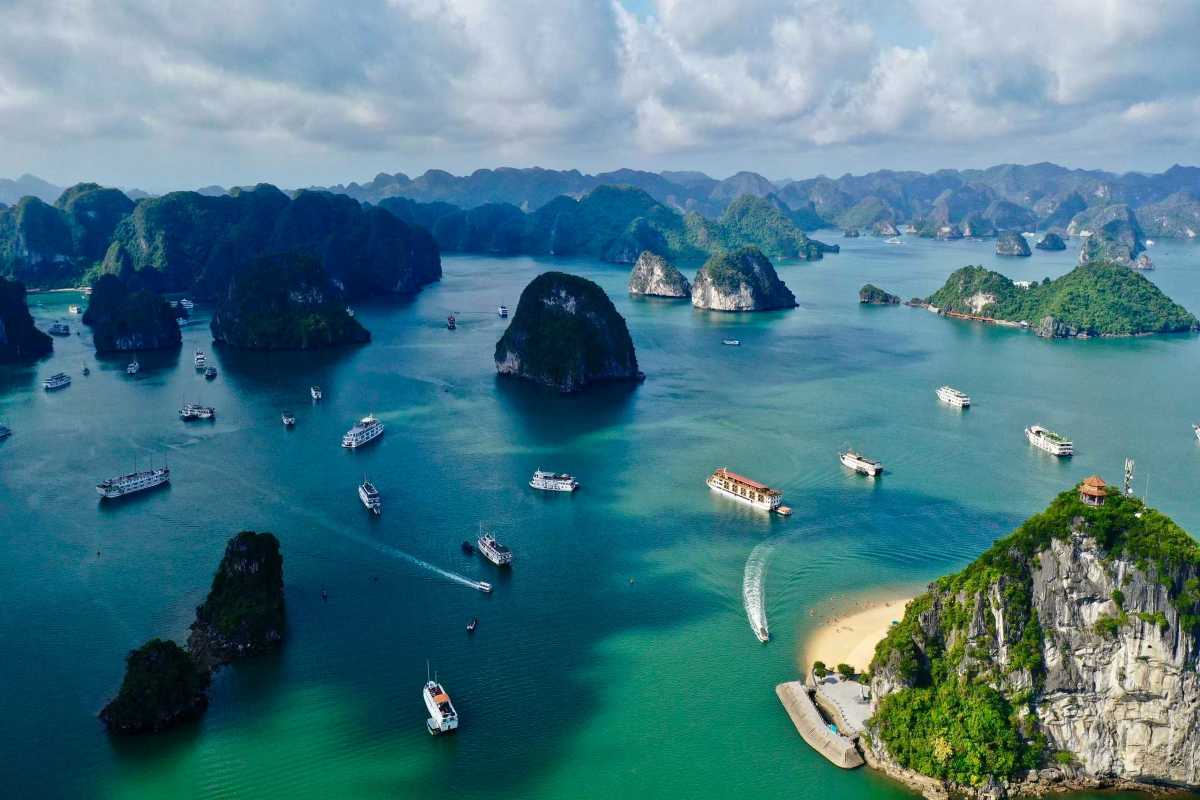
When to Go for the Best Experience
Choosing the right time to visit Halong Bay can make all the difference in your trip to Dinh Huong Islet. Understanding the seasons, weather patterns, and visitor flow helps you enjoy clearer views, calmer seas, and fewer crowds. This guide breaks down the best periods to visit and what to expect throughout the year, so you can plan with confidence and make the most of your experience.
Plan your trip around the best time to visit Halong Bay for unforgettable sights and smooth sailing.
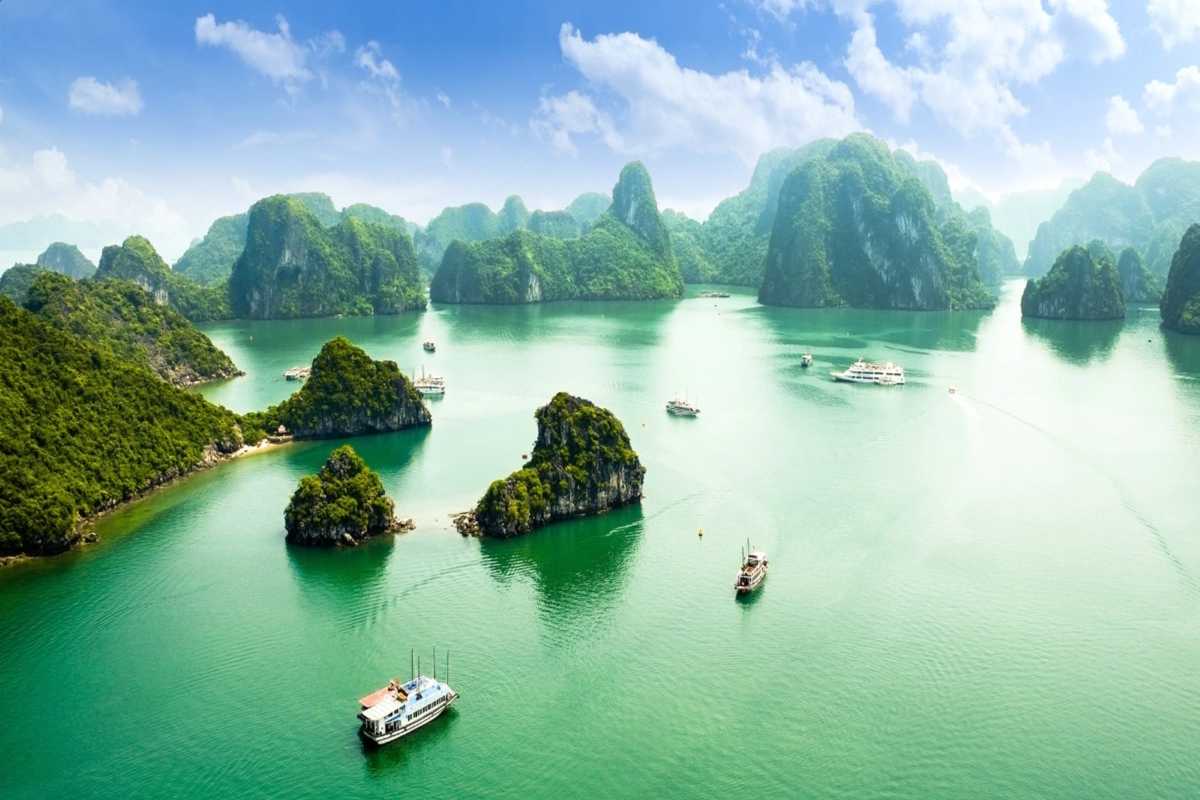
Best seasons to visit Halong Bay
The best time to visit Halong Bay depends on the season, each offering unique pros and cons for viewing Dinh Huong Islet. Spring (March to May) features mild temperatures and blossoming nature but occasional light rain. Summer (June to August) brings warmth but often heavy rains and humidity. Autumn (September to November) offers cooler air, clearer skies, and calmer seas, making it ideal for cruising. Winter (December to February) is cooler with occasional fog, which can obscure views but creates a mystical atmosphere.
Choosing the right season helps you tailor your visit to your weather and crowd preferences.
Plan your visit in the season that best fits your ideal Halong Bay experience.
Weather patterns and visibility by season
Understanding the detailed weather patterns in Halong Bay helps you pick the best months for clear views of Dinh Huong Islet. Spring offers average temperatures of 20–25°C with moderate rainfall, usually allowing good visibility. Summer can be hot, around 28–33°C, with heavy rains and thunderstorms that reduce visibility. Autumn is cooler and drier, averaging 22–27°C, with crisp air and minimal fog—perfect for photography. Winter temperatures drop to 15–20°C with occasional fog that can obscure distant islets, including Dinh Huong.
Seasonal fog often forms in winter, so if clear visibility is your priority, spring and autumn are the most reliable.
Consider these weather trends when deciding the best time to visit Halong Bay.
Recommended months for fewer crowds and calm seas
For a peaceful cruise with calm seas near Dinh Huong Islet, consider traveling during the shoulder seasons:
- Late spring (April to May): Warm weather, moderate crowds
- Early autumn (September to October): Cooler temperatures, fewer tourists
These months typically offer smooth waters and less congestion on popular cruise routes. Avoid peak holiday seasons such as summer and Lunar New Year to escape large crowds and higher prices.
Travel during these times for a more relaxed Halong Bay adventure.
Sunrise or sunset? Timing your cruise for beauty
Choosing the right time of day to view Dinh Huong Islet can transform your experience. Sunrise bathes the islet in soft, warm light that gently highlights its unique shape against the calm waters of Halong Bay. Sunset, on the other hand, offers dramatic, fiery skies that create stunning silhouettes. Both times provide magical atmospheres perfect for photography and quiet reflection. Planning your cruise around these golden hours can elevate your visit into a truly memorable moment.
Capture the beauty of Dinh Huong Islet by aligning your trip with the natural light of Halong Bay’s sunrise or sunset.
Light conditions that enhance the islet’s silhouette
The soft, low-angle light during Halong Bay sunrise and sunset creates breathtaking silhouettes of Dinh Huong Islet. During these hours, the “golden hour” bathes the limestone karsts in warm tones, enhancing textures and shadows. The “blue hour” just before sunrise or after sunset casts a cooler glow, adding mood and depth. Photographers treasure these moments for their dramatic contrasts and gentle lighting that highlights the islet’s iconic shape.
Timing your visit to coincide with these light conditions reveals the islet’s full photographic potential.
Best time for photography and calm reflections
For mirror-like reflections of Dinh Huong Islet on the water, early mornings or late afternoons are best. These times often feature calm seas with little wind, creating glassy surfaces that perfectly double the islet’s image. Avoid mid-day or windy periods when ripples distort reflections. Capturing these peaceful moments not only yields stunning photos but also enhances the serene feeling of floating amidst the majestic Halong Bay scenery.
Plan your photo sessions during calm waters for flawless reflections of Dinh Huong Islet.
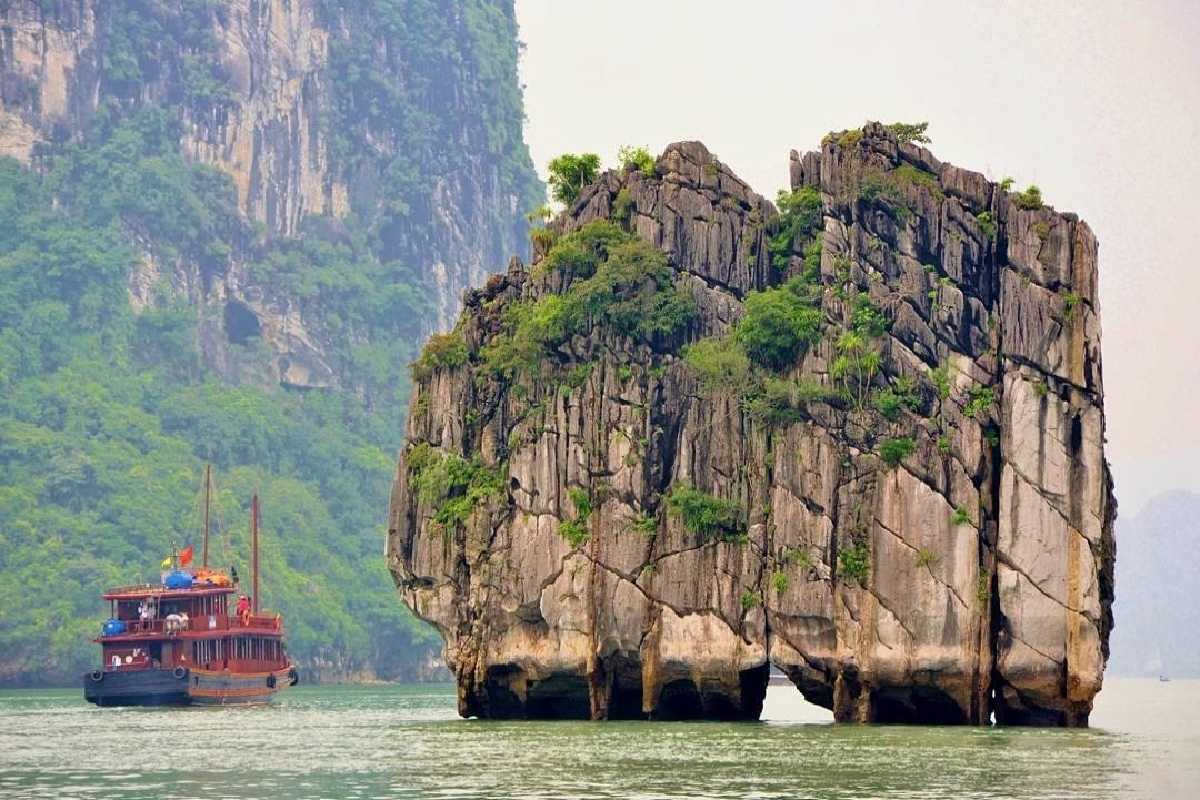
Holiday and festival considerations
Traveling to Halong Bay during major holidays and festivals can greatly affect your experience. Peak times bring larger crowds, higher prices, and limited availability on cruises and accommodations. Being aware of these periods helps you plan better, either by booking early or choosing less busy times.
Understanding Halong Bay holidays and festivals allows you to make informed decisions about when to visit and what to expect.
Vietnamese national holidays that affect cruise availability
Several major public holidays in Vietnam impact cruise availability and pricing in Halong Bay:
- Reunification Day (April 30): Increased tourist influx; book well in advance.
- Independence Day (September 2): Higher demand and possible surcharges.
- International Labor Day (May 1): Crowds and limited cabin availability.
- Mid-Autumn Festival: Cultural events may affect cruise schedules.
During these holidays, expect crowded tours and less flexibility in booking. Planning early or avoiding these dates can enhance your visit.
Lunar New Year and special events around the bay
The Tet holiday Halong Bay period is the most significant cultural celebration in Vietnam. During Tet, many tours and services may close or operate on limited schedules. However, experiencing Halong Bay Carnival and Tet festivities offers a unique glimpse into local traditions, vibrant parades, and special ceremonies.
If you wish to witness these events, early booking is essential due to high demand. Alternatively, travelers seeking quieter trips might consider avoiding this period.
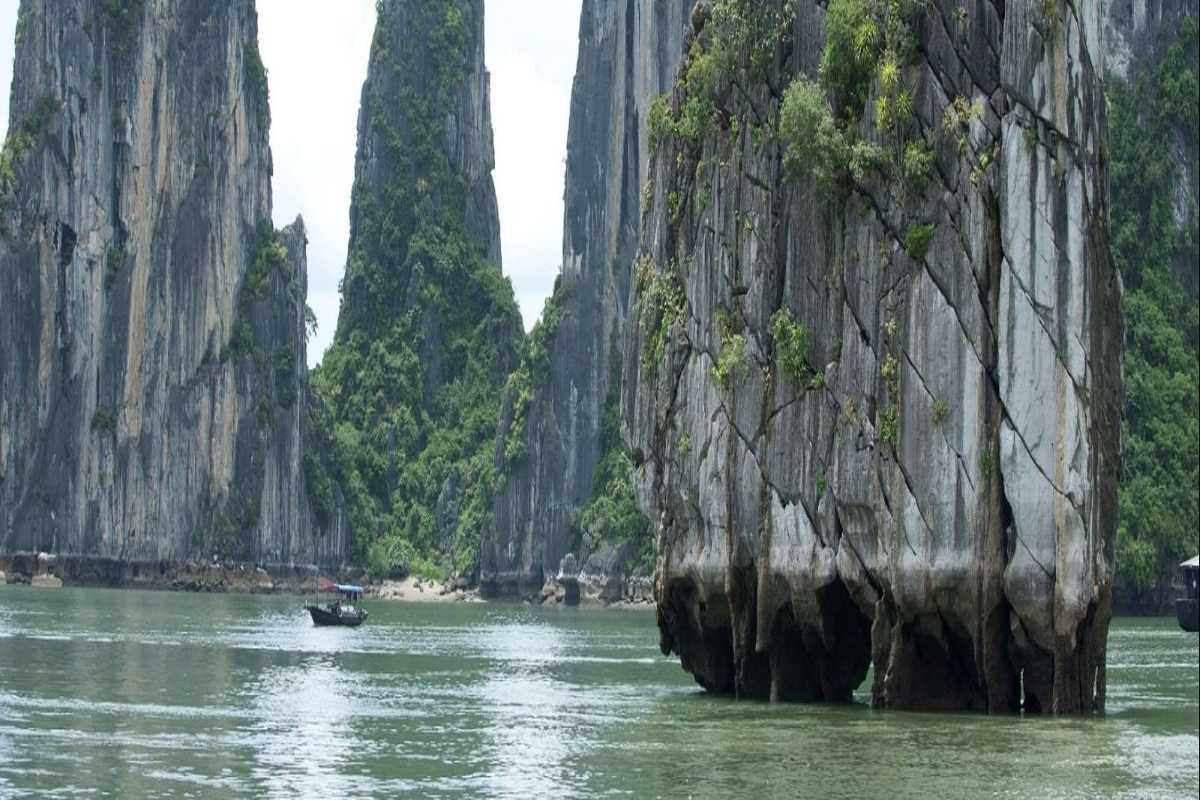
What to See and Do Around the Islet
Visiting Dinh Huong Islet offers more than just admiring its unique shape. The surrounding Halong Bay area is rich with captivating activities and attractions that can turn your trip into a full adventure. From scenic cruises to exploring nearby caves and islands, there are plenty of options to enrich your itinerary. Whether you want to soak in the natural beauty or capture stunning photographs, the area around Dinh Huong Islet provides a perfect blend of experiences to maximize your visit.
Plan your journey to include these attractions and activities to fully enjoy your time in Halong Bay.
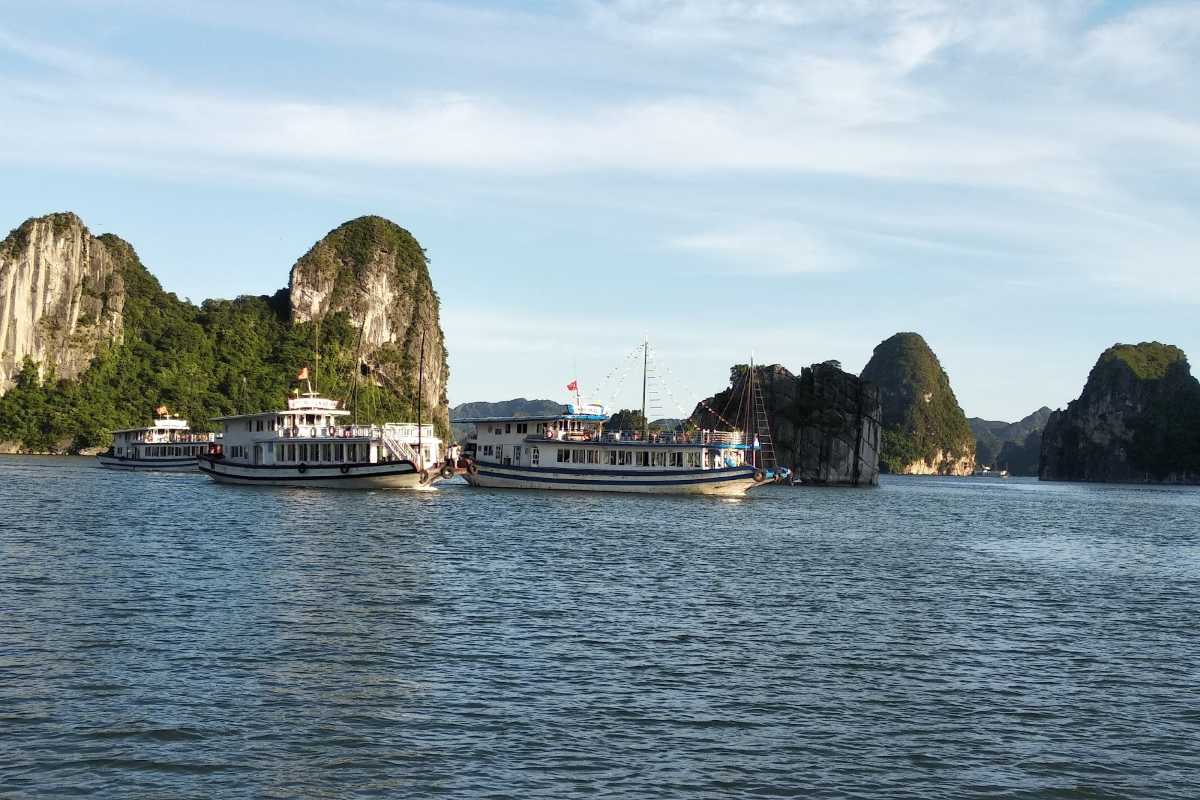
Cruise-based sightseeing and photography
A cruise is the most popular way to experience Dinh Huong Islet and the surrounding wonders of Halong Bay. Cruises offer panoramic views and excellent photography opportunities, allowing you to capture the islet’s unique silhouette against the shimmering water. Knowing where to position yourself on the boat and when to take photos can greatly enhance your experience.
Use practical tips to maximize your sightseeing and photography during your cruise.
Tips for taking the perfect photo of Dinh Huong Islet
Taking the perfect photo of Dinh Huong Islet requires some planning and technique. Here are key tips to help you:
- Best vantage points: Position yourself on the upper deck or the side of the boat facing the islet for unobstructed views.
- Use water as foreground: Incorporate reflections on the water surface to add depth and interest.
- Manage movement: Use fast shutter speeds to avoid blur from boat motion.
- Lighting matters: Shoot during early morning or late afternoon for softer light and dramatic shadows.
- Be patient: Wait for moments when the boat slows or stops near the islet for better shots.
Following these tips will ensure your photos highlight the beauty and unique shape of Dinh Huong Islet.
What to look for as you pass the islet on deck
As your boat glides past Dinh Huong Islet, take time to observe its remarkable features:
- Incense burner shape: Notice the four sturdy “legs” supporting the flat “plate” top, resembling a traditional incense burner.
- Limestone texture: Observe the rough, weathered surface showing years of natural erosion.
- Vegetation patches: Look for small greenery clinging to cracks and crevices, adding contrast to the stone.
- Light and shadow: Watch how the sunlight shifts over the islet, creating dynamic patterns and enhancing its silhouette.
These details bring the islet to life and deepen your appreciation of its natural beauty.
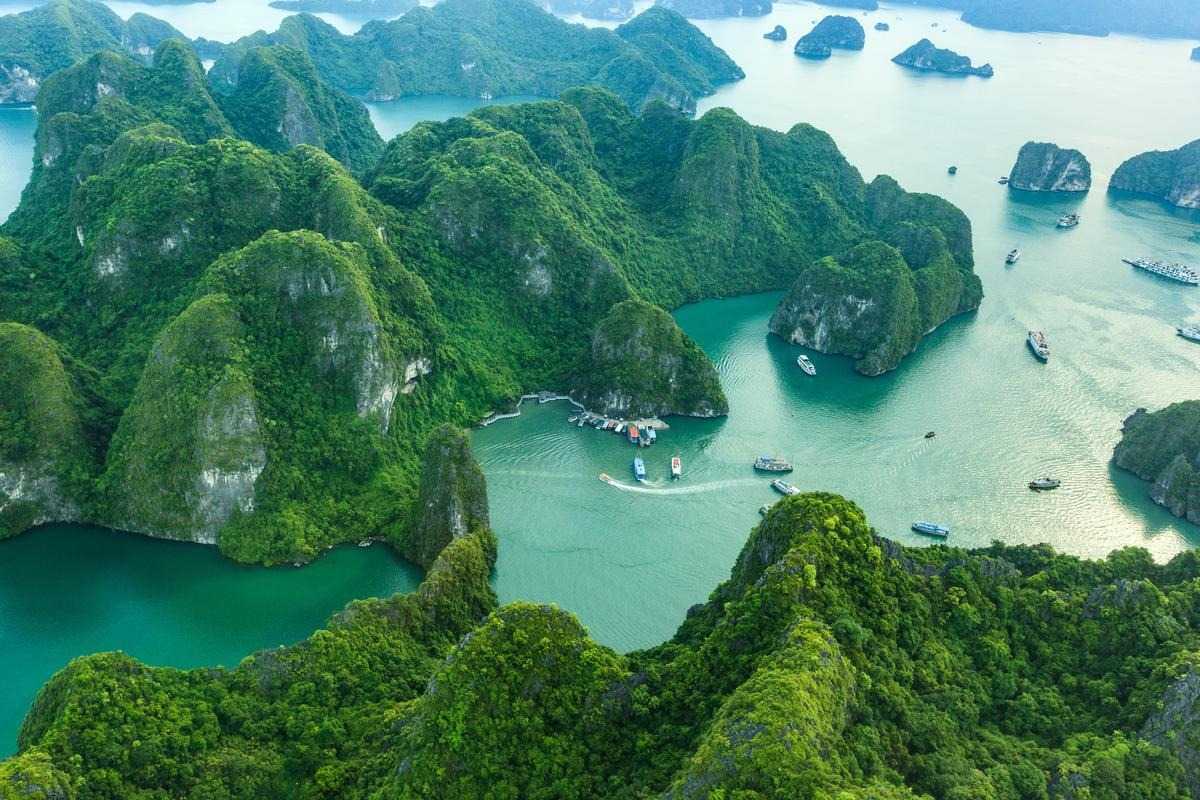
Combine it with nearby attractions
To make the most of your visit to Dinh Huong Islet, consider combining it with other must-see sights in Halong Bay. This approach offers a richer, more varied experience, allowing you to explore the bay’s diverse landscapes and cultural highlights. Pairing the islet with nearby attractions creates a seamless itinerary, maximizing your time and memories.
Use these suggestions to plan an efficient and rewarding Halong Bay itinerary.
Suggested pairings: Dau Go Cave, Thien Cung Cave, Ti Top Island
Here are popular attractions that pair perfectly with Dinh Huong Islet for a well-rounded Halong Bay itinerary:
- Dau Go Cave: Known for its impressive stalactites and stalagmites, this cave offers a mystical contrast to the open waters. Located about 15 minutes by boat from Dinh Huong Islet, it is a great next stop for exploring underground formations.
- Thien Cung Cave: Also called the "Heavenly Palace Cave," it features dramatic rock formations and colorful lighting. It's about a 20-minute boat ride from the islet and adds cultural depth to your tour.
- Ti Top Island: Famous for its panoramic views and sandy beach, this island provides a refreshing break and a chance to climb to the summit. The boat ride from Dinh Huong Islet is approximately 30 minutes.
These destinations complement Dinh Huong Islet beautifully and can be combined easily on most cruise routes.
Sample half-day or full-day itinerary ideas
To simplify your planning, here are a few sample itineraries including Dinh Huong Islet and nearby attractions:
- Morning Dinh Huong & Cave Exploration: Start with a morning cruise to Dinh Huong Islet for peaceful views and photography. Continue to Dau Go Cave and Thien Cung Cave for a blend of natural beauty and cave wonders. Return by early afternoon.
- Full Day Classic Halong Bay with Sunset Islet View: Spend a full day exploring Dinh Huong Islet, Ti Top Island, and the iconic caves. Enjoy sunset views of the islet from the deck before heading back to port.
- Half-Day Cruise with Kayaking and Scenic Stops: Combine a visit to Dinh Huong Islet with kayaking near nearby limestone formations and a quick stop at Ti Top Island for beach relaxation.
These itineraries provide flexible options that suit different schedules and interests, helping you craft the perfect Halong Bay day trip itinerary.
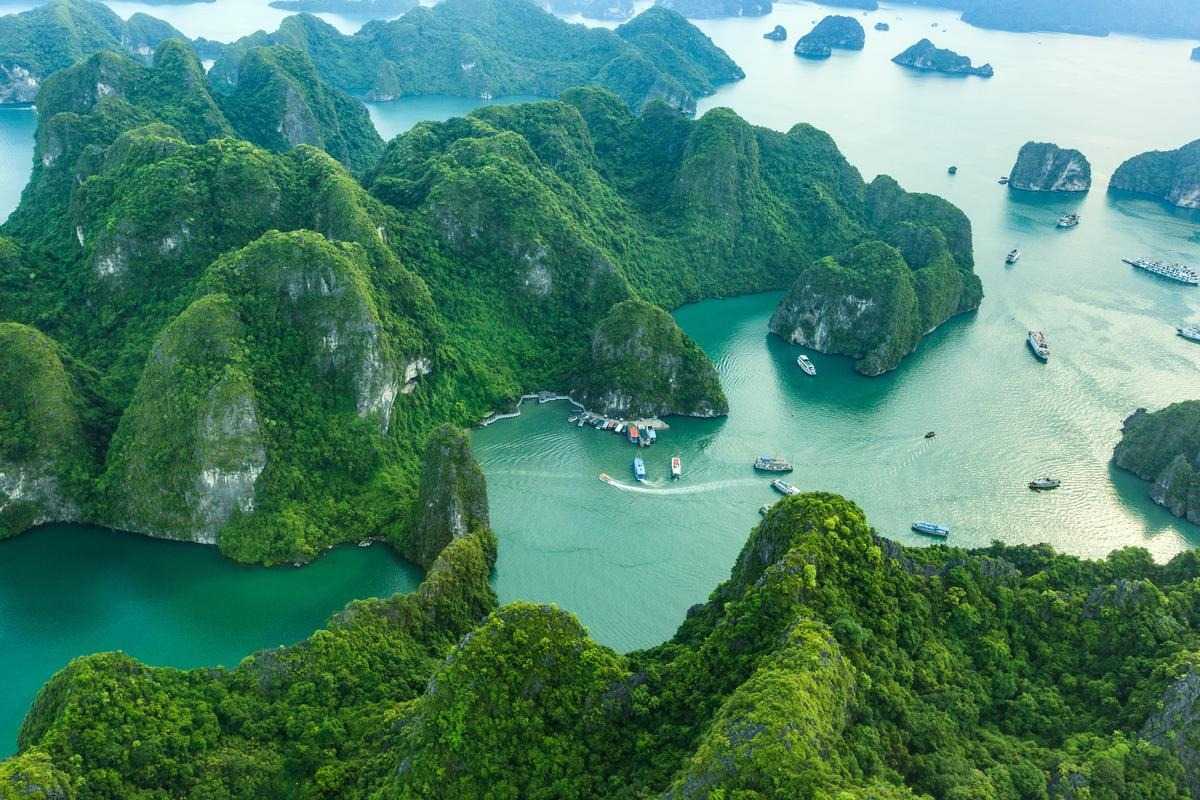
Try kayaking or private boat options
If you’re seeking a more active and personalized way to explore Dinh Huong Islet and the surrounding waters of Halong Bay, kayaking and private boat tours offer unique experiences beyond the standard cruises. Kayaking lets you glide silently across calm waters, bringing you closer to nature’s details. Private boats provide flexibility, letting you tailor your itinerary and enjoy a more intimate journey at your own pace.
Pros and cons of kayaking near the islet
Kayaking near Dinh Huong Islet offers several rewarding benefits, along with some considerations to keep in mind:
- Close-up views: Experience the islet’s limestone formations and hidden details from water level.
- Quiet experience: Paddle through tranquil areas free from engine noise, immersing yourself in nature’s sounds.
- Physical activity: Enjoy a healthy workout combined with sightseeing.
- Restrictions: Direct kayaking to Dinh Huong Islet is often limited due to preservation efforts and safety.
- Weather dependency: Wind and waves can affect kayaking feasibility, especially during stormy seasons.
- Physical exertion: Kayaking requires stamina; beginners should assess their comfort level.
While direct access may be restricted, nearby bays with similar karst features often welcome kayakers, making this a versatile option.
Best charter companies for close-up views
For travelers seeking private or customized tours near Dinh Huong Islet, several reputable charter companies in Halong Bay offer personalized boat rentals. These companies typically provide smaller boats that can navigate closer to scenic spots while respecting environmental regulations. When booking, ask about options for flexible itineraries, knowledgeable guides, and safety measures.
If specific company names are not pre-known, inquire through your cruise operator or local travel agencies. Always verify credentials to ensure a safe and responsible tour experience.
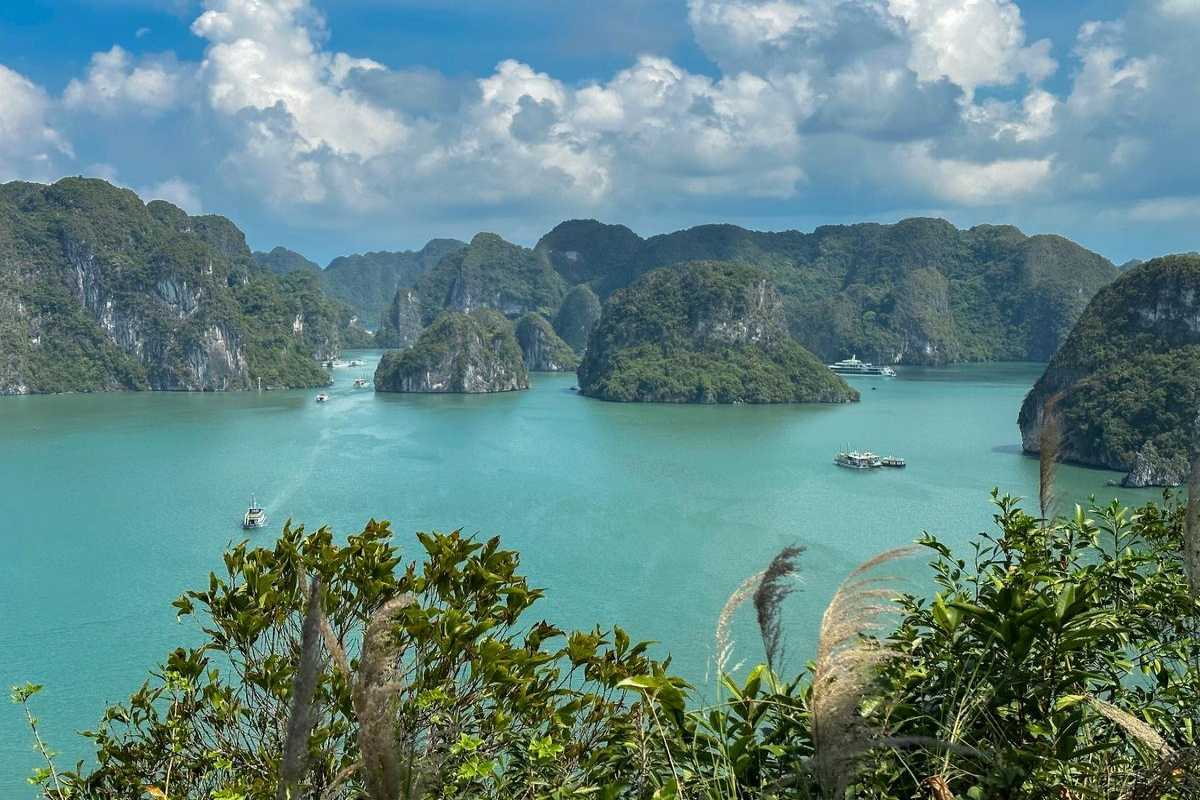
Beyond the View: Immersive Experiences Near Dinh Huong Islet
Exploring Dinh Huong Islet is not just about admiring its striking limestone silhouette from a distance. To truly connect with the spirit of Halong Bay, immersive experiences invite you to engage more deeply with the surrounding environment. These hands-on activities offer fresh perspectives, letting you discover hidden lagoons, intimate waterways, and the subtle rhythms of local life. Whether paddling a kayak through quiet coves or drifting along in a traditional sampan boat, you’ll find unique ways to appreciate the bay’s natural beauty up close.
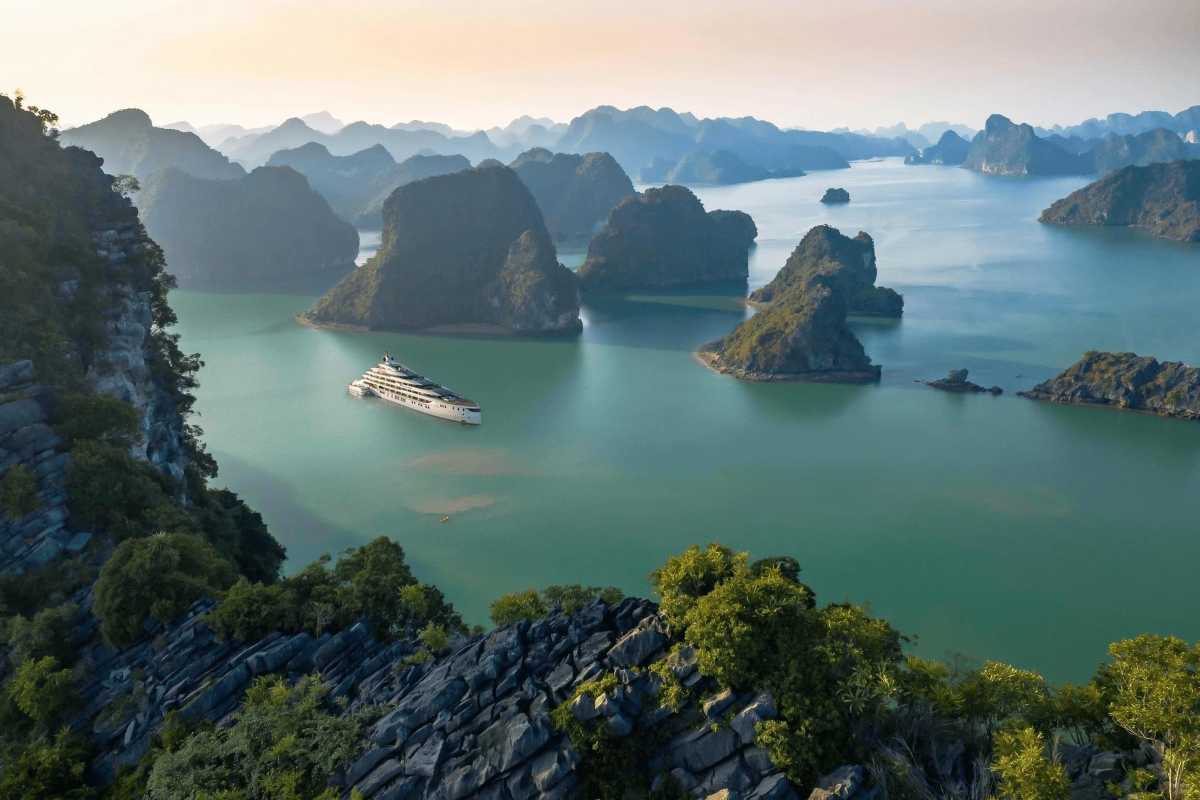
Kayaking & Sampan Boat Adventures Around Nearby Islets
If you want to feel the gentle rhythm of Halong Bay’s waters firsthand, kayaking and sampan boat rides offer intimate ways to explore beyond the usual cruise routes. Gliding just above the water’s surface allows you to soak in the sights and sounds of secluded coves and towering karst formations. These activities invite you to slow down, listen closely, and embrace the bay’s serene beauty in a more personal and adventurous way.
Areas Permitted for Kayaking and What You'll See
Kayaking in Halong Bay is allowed in selected tranquil areas that protect the environment while showcasing the bay’s best features. Here’s what to expect:
- Popular kayaking zones: calm coves and lagoons near Dinh Huong Islet and other nearby islets.
- Geological highlights: navigate around striking karst towers and hidden limestone caves.
- Local wildlife: spot waterbirds, fish, and floating villages that reveal daily bay life.
- Scenic views: paddle beneath overhanging cliffs and through quiet channels away from busy cruise routes.
These areas provide a safe and memorable environment for paddling enthusiasts, with plenty of opportunities for discovery.
Safety Guidelines and How to Maximize Your Experience
Your safety is paramount when kayaking in Halong Bay. Follow these tips for a secure and enjoyable adventure:
- Always wear a life jacket and check its fit before setting off.
- Stay close to your group and listen to your guide’s instructions.
- Use a waterproof bag to protect phones and valuables.
- Monitor weather conditions closely; avoid kayaking during strong winds or storms.
- Respect the environment—avoid disturbing wildlife or damaging vegetation.
- Bring sunscreen and hydrate well to protect against sun exposure.
Adhering to these guidelines ensures your experience is both safe and memorable.
Elena's Serene Kayak Journey: Discovering Hidden Caves Near Dinh Huong
While a cruise ship offers sweeping panoramic views of Halong Bay, I discovered that to truly feel the bay – to hear its whispers and touch its ancient skin – you need to get down to water level. My kayaking journey near Dinh Huong Islet wasn't just another activity; it was a profound, quiet communion with nature, revealing secret corners that the larger boats simply couldn't reach, and offering a perspective on this majestic landscape that felt deeply personal and utterly unique.
The morning after our overnight cruise, the air was still and cool, with a thin veil of mist softening the edges of the distant karsts. After a quick safety briefing and slipping into my life jacket, I climbed into my kayak. The initial moments felt a little wobbly, but as soon as my paddle dipped into the water, a profound sense of calm washed over me. The quiet was almost startling after the gentle hum of the cruise ship. All I could hear was the soft plink-plonk of water dripping from my paddle and the occasional cry of a distant seabird. It was a stark contrast to the lively atmosphere on the ship, and it instantly immersed me in the bay's natural rhythm.
Our small group paddled towards a cluster of islets not far from where we'd admired Dinh Huong the previous evening. From this low vantage point, the scale of the limestone cliffs was even more impressive, rising sheer and imposing on either side. I remember reaching out and touching the cool, damp rock, feeling the ancient, rough texture beneath my fingertips. It felt like touching history itself.
The real magic began when our guide pointed towards a narrow, almost hidden opening in a cliff face. "Follow me," he said, his voice a low murmur. This was no grand cave entrance; it was a modest slit, just wide enough for a single kayak to pass through. A slight current pulled at the kayak as I carefully maneuvered inside, the daylight quickly fading to a mystical twilight. The air inside the grotto was cooler, carrying a faint earthy scent. My paddlestrokes echoed softly, and the water, protected from the wind, was perfectly still, reflecting the dim light from the entrance like a polished mirror. It was exhilarating and slightly eerie, a true "hidden gem" experience.
Navigating a few of these narrow passages required careful paddling, sometimes having to pull myself along by the rock walls to avoid bumping. It was a gentle challenge, but the reward was immense: emerging into tiny, secluded lagoons, perfectly still and surrounded by towering cliffs, vibrant green foliage clinging precariously to the rock. These were places that felt untouched, peaceful havens where only a kayak could venture. The most memorable part was undoubtedly one particular grotto. As I slowly glided out of its dark interior, a patch of sunlight pierced through an opening above, illuminating the emerald water in a breathtaking display. It felt like I had stumbled upon a secret world, a pure, unadulterated moment of discovery.
Kayaking offers an unparalleled, intimate perspective of Halong Bay that you simply can't get from a cruise deck. While you likely won't kayak right up to Dinh Huong Islet itself (it's protected and often busy with passing boats), the experience in nearby, equally stunning areas provides that same sense of wonder. The real joy is in exploring the smaller, hidden grottos and lagoons that are inaccessible to larger vessels, offering moments of incredible solitude and beauty. Don't underestimate the physical exertion – it's a good workout!
Actionable Practical Takeaways:
- Listen to Your Guide: Always follow their instructions, especially regarding currents or narrow passages. They know the safest routes to the hidden spots.
- Waterproof Bag is Essential: Bring a dry bag for your phone, camera, and any valuables. You'll want to take pictures, but splashes are inevitable!
- Dress Comfortably: Wear light, quick-drying clothing and water-friendly shoes or sandals. You'll likely get a little wet.
- Pace Yourself: Kayaking can be tiring. Take breaks, enjoy the scenery, and don't feel pressured to go too fast.
- Early Morning is Best: The water tends to be calmer and the air cooler in the mornings, making for a more serene and enjoyable paddle. Fewer other kayakers too!
My kayak journey was a reminder that sometimes the deepest connections with a place come from slowing down, getting closer, and allowing yourself to explore beyond the obvious. It transformed Halong Bay from a beautiful postcard into a living, breathing adventure.
Recommendation: If you crave an up-close, truly immersive experience in Halong Bay, kayaking is an absolute must-do. It allows you to discover the bay's hidden grottos and tranquil lagoons, offering a unique and personal adventure that complements any cruise. It's an incredible way to feel truly connected to the limestone wonders, including getting a different perspective on the formations near Dinh Huong. Don't miss this chance for a serene and unforgettable exploration.
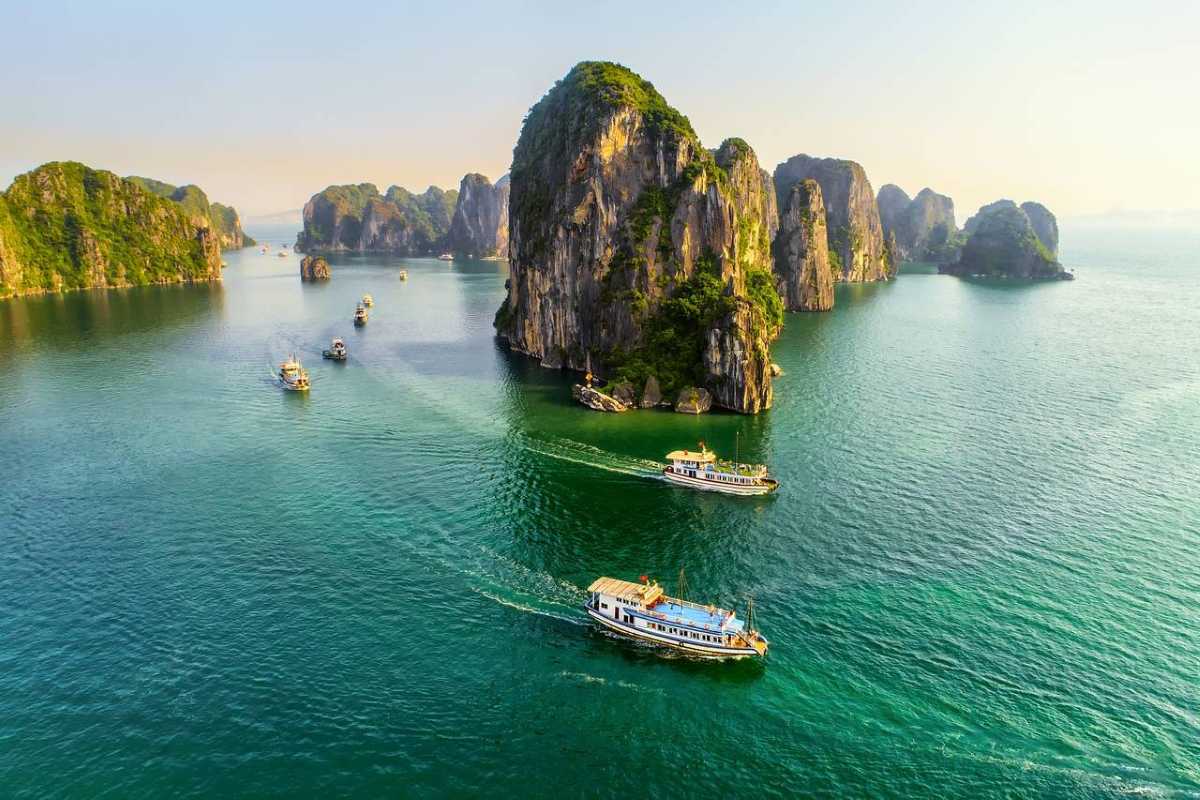
Photography Hotspots & Tips for Capturing Dinh Huong Islet's Beauty
Capturing the stunning beauty of Dinh Huong Islet requires more than just pointing and shooting. To create exceptional photos, understanding the best locations on your cruise and mastering advanced techniques can make all the difference. This section equips you with expert advice on vantage points, lighting, and overcoming common photography challenges to help you bring home breathtaking images of this iconic Halong Bay landmark.
Prime Angles and Vantage Points from Cruise Decks
Knowing where to stand on your boat can transform your photos of Dinh Huong Islet. Follow these tips to secure the best angles:
- Starboard side: Most cruises pass the islet with the starboard side facing it, offering unobstructed views ideal for wide shots.
- Upper deck: For panoramic views, the upper deck gives a higher perspective and less interference from railings or passengers.
- Port side: Sometimes offers unique reflection shots if the water is calm on that side.
- Calm waters: Look for still water areas to capture mirror-like reflections of the islet.
- Avoid crowded spots: Arrive early to claim the best photo position before other passengers gather.
These vantage points maximize your chances of framing Dinh Huong Islet beautifully in your shots.
Dealing with Glare, Movement, and Crowds for Clear Shots
Taking clear photos on a moving boat can be challenging. Here are practical tips to overcome common issues:
- Use a polarizing filter to reduce glare and enhance colors on sunny days.
- Employ burst mode to capture multiple shots quickly, increasing chances of a sharp image.
- Seek less crowded areas on deck for unobstructed views and easier framing.
- Wait for the boat to stabilize before clicking to minimize motion blur.
- Shield your camera or phone lens from splashes or spray using a waterproof case.
- Be patient—light conditions and crowd flow change throughout the day, offering better opportunities.
These strategies help you capture stunning photos of Dinh Huong Islet despite environmental challenges.
Marcus' Golden Hour Shot: My Secret to Capturing Dinh Huong's Silhouette
As an avid amateur photographer, I knew that capturing the iconic Dinh Huong Islet was going to be a highlight of my Halong Bay trip. But I didn't just want a pretty picture; I wanted the shot – one that truly conveyed its mystique. Most people snap photos in broad daylight, and while those are nice, my goal was to chase the 'golden hour,' aiming for a dramatic silhouette that would elevate the islet from a landmark to a work of art. This pursuit wasn't without its early blunders, but it led me to discover the true magic of Halong Bay's light and how to harness it.
My first attempt at a Halong Bay sunset shot, on a previous day trip years ago, was a disaster. I focused too much on the vibrant sky and ended up with a beautifully exposed sunset, but a completely underexposed, shapeless blob where the islets should have been. It taught me a crucial lesson: when you're aiming for a silhouette, the subject (Dinh Huong Islet, in this case) isn't the priority for exposure; the light around it is. I realized I needed a completely different approach for my return trip.
This time, I was on an overnight cruise, specifically because I wanted those precious "golden hour" moments. I scouted my location on the ship early, finding a spot on the upper deck, slightly off to the side, to avoid heads getting into my frame. As the sun began its descent, the air cooled, and the bay turned into a palette of fiery oranges and soft purples. This was it – the golden hour.
My strategy was simple yet effective:
- Timing is Everything: I made sure I was ready about 20-30 minutes before the official sunset time. The most magical light happens as the sun dips low but is still above the horizon.
- Lens Choice: I used my 70-200mm zoom lens (or any decent telephoto lens on a smartphone). This allowed me to "compress" the background and make Dinh Huong Islet appear closer and more prominent against the colorful sky.
- Composition: I framed Dinh Huong Islet dead center, making sure its distinctive "incense burner" shape was clearly defined. Crucially, I included a sliver of the calm water below it, which began to reflect the stunning sky, adding depth and a sense of tranquility.
- Exposure for the Sky: This was my big lesson. Instead of letting the camera expose for the dark islet, I intentionally metered my exposure for the brightest part of the sky (just above the sun). On a DSLR, I'd use spot metering. On a smartphone, I'd tap and hold on the bright sky to lock the exposure. This underexposed the islet, turning it into that striking black silhouette I was after.
- Adjusting for Drama: I also slightly lowered my exposure compensation (about -0.7 to -1.0 EV) to really deepen the colors of the sky and intensify the silhouette effect.
The result? A truly breathtaking shot. The Dinh Huong Islet stood sharply defined, a majestic silhouette against a canvas of fiery reds, deep oranges, and soft blues. The calm water below mirrored the scene, creating a sense of serene balance. It wasn't just a picture; it was a moment frozen in time, capturing the very essence of Halong Bay's dramatic beauty at its most poetic.
Silhouetting iconic landmarks like Dinh Huong Islet during golden hour is a powerful way to add artistic flair to your travel photos. The trick is to expose for the light source (the sky) and let your subject fall into shadow. Don't be afraid to experiment with your camera's manual settings, even on a smartphone. Most modern phones have manual or "Pro" modes that allow you to adjust exposure. Patience is also key; the light changes rapidly, so keep shooting!
Actionable Practical Takeaways:
- Go for Golden Hour: Plan to be on deck and ready at least 30 minutes before sunrise or sunset. This is when the light is most dramatic.
- Expose for the Brightest Part: If you're using a camera, set your exposure to the sky, not the islet. On a smartphone, tap and hold your finger on the brightest part of the sky on your screen to lock the exposure.
- Zoom In for Impact: Use your phone's zoom, or a telephoto lens if you have one, to fill the frame with Dinh Huong Islet and the sky. This helps create that classic silhouette look.
- Find an Unobstructed View: Get to the top deck early to secure a spot away from other people, ensuring a clean shot of the horizon.
- Consider Reflections: Look for calm water. A perfectly still bay will give you a beautiful, mirrored reflection of the islet and the sky, doubling the visual impact.
Capturing Dinh Huong Islet in silhouette was more than just taking a photo; it was about understanding the light, anticipating the moment, and transforming a landmark into a timeless piece of art. It’s a shot I’ll always cherish, a testament to Halong Bay's enduring beauty.
Recommendation: If you're a photographer, or simply someone who appreciates a stunning image, you absolutely must try to capture Dinh Huong Islet during the golden hour. It's an unparalleled opportunity to create a truly memorable photograph, transforming a beautiful rock formation into a captivating silhouette against Halong Bay's spectacular sky. Don't miss this chance to take home a truly unique piece of Vietnam's magic.
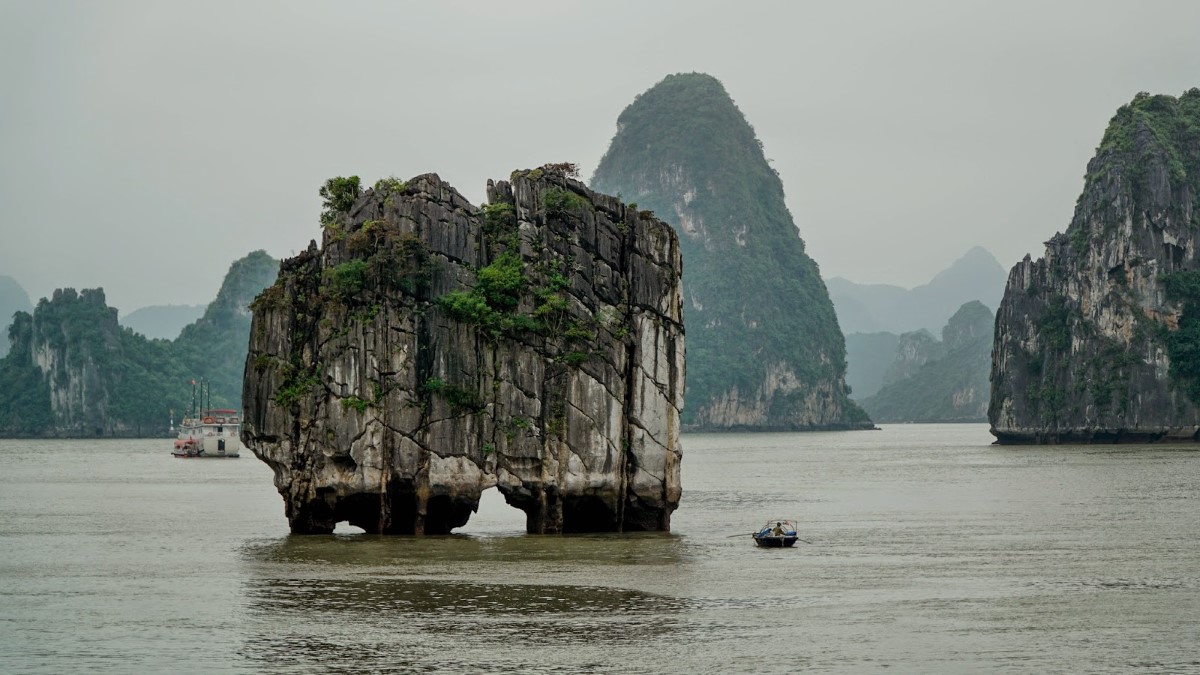
Deep Dive: The Geology & Ecology of Dinh Huong Islet and Halong Bay
Understanding the geological and ecological fabric of Dinh Huong Islet enriches your visit by revealing the ancient natural forces that shaped this stunning landmark. Nestled within the iconic Halong Bay, the islet is part of a larger karst landscape formed over millions of years. This section explores the scientific story behind the dramatic limestone towers and the delicate marine ecosystems that thrive around them, offering a deeper appreciation of this UNESCO World Heritage site’s natural heritage.
Discover how geological history and ecological diversity intertwine to create the unique environment of Dinh Huong Islet. Prepare to see beyond its striking silhouette and connect with the natural rhythms that continue to shape Halong Bay today.
Let this knowledge inspire your exploration of Dinh Huong Islet and the surrounding bay, enhancing your experience with expert insight.

Karst Topography Explained: How Dinh Huong Was Formed
The distinctive shape of Dinh Huong Islet is a product of karst topography, a geological process shaped by water slowly dissolving limestone over vast time spans. Millions of years ago, this region was covered by a shallow sea where thick layers of limestone sedimented and solidified. Subsequent tectonic uplift raised these limestone beds above sea level.
Rainwater, slightly acidic from absorbing carbon dioxide, gradually carved the rock, forming the steep cliffs, towers, and caves characteristic of Halong Bay. This natural sculpting process explains why Dinh Huong Islet rises so dramatically from the water, showcasing sharp edges and rounded features typical of karst formations.
By understanding this geological background, you’ll appreciate how the islet’s dramatic silhouette represents the slow, persistent work of nature over millions of years.
The Million-Year Process of Limestone Erosion
The geological timeline of Halong Bay stretches back roughly 500 million years. Initially, the area lay beneath ancient seas where sedimentation formed layers of limestone. Around 20 million years ago, tectonic forces uplifted the region, exposing these layers to air and freshwater.
Over millennia, rainwater and waves slowly dissolved the limestone through chemical erosion. This persistent erosion formed towering karst towers, sharp cliffs, and deep caves that define Halong Bay's dramatic landscape today. The iconic shape of Dinh Huong Islet, with its “incense burner” silhouette, is the direct result of this slow carving by natural forces.
Imagining this process is like watching a sculptor patiently chip away at stone for millions of years, revealing the intricate shapes hidden beneath.
Distinguishing Features of Dinh Huong's Geological Structure
Dinh Huong Islet stands out with several notable geological characteristics:
- Horizontal lines: These indicate ancient sea levels when the bay was submerged, marking its geological history.
- Limestone texture: The islet’s surface shows distinct erosion patterns, with smooth rounded edges contrasting with sharp crevices.
- Karst tower shape: Its four "legs" and broad "plate" at the top are classic karst features formed by water erosion and wind.
- Fossil presence: In some parts, faint fossil imprints testify to its marine origins millions of years ago.
Recognizing these features during your visit offers a fascinating glimpse into the natural history etched into the rock.

Unique Marine Life & Ecosystem Around the Islet
The waters surrounding Dinh Huong Islet are a vital part of the Halong Bay marine ecosystem, home to an array of vibrant marine flora and fauna. This rich biodiversity supports the ecological balance of the bay and contributes to its global ecological significance. From colorful coral reefs to diverse fish species, the area is a living tapestry that sustains both nature and local livelihoods. Appreciating this ecosystem adds a new layer of meaning to your visit, reminding travelers of the delicate harmony that must be preserved.
Understanding the biological wealth around Dinh Huong Islet enhances your experience and fosters respect for this UNESCO World Heritage site's natural heritage. Engaging with the environment responsibly helps ensure these ecosystems thrive for generations.
Key Species and Their Role in Halong Bay's Health
The biodiversity near Dinh Huong Islet features several notable species that play crucial ecological roles:
- Coral reefs: These form the foundation of the marine ecosystem, providing shelter and breeding grounds for numerous aquatic species.
- Barracudas and groupers: Predatory fish that help maintain balanced fish populations and healthy coral reefs.
- Mangrove crabs: Vital for nutrient cycling and supporting coastal water quality.
- Sea eagles and herons: Birds nesting on nearby cliffs, indicating a healthy marine and coastal environment.
Each species contributes to the overall ecosystem health, making conservation efforts around Halong Bay critical for maintaining biodiversity and natural beauty.
Conservation Efforts & Responsible Tourism Practices
Efforts to protect Halong Bay focus on sustainable tourism and environmental management:
- Waste management programs: Local authorities and tour operators work to minimize pollution in the bay’s waters.
- Protected marine areas: Certain zones restrict fishing and boating to preserve habitats.
- Eco-friendly tour options: Travelers are encouraged to choose operators committed to responsible practices.
- Visitor guidelines: Respect wildlife, avoid littering, and support local conservation initiatives.
By adopting responsible tourism behaviors, you can help preserve the pristine environment of Dinh Huong Islet and the greater Halong Bay for future visitors to enjoy.
Dr. Anh's Observation: Spotting Rare Birds Near the Islet's Cliffs
While many visitors to Halong Bay are captivated by the grandeur of its limestone karsts and emerald waters, my focus often drifts upwards, towards the sky and the rocky crevices that serve as hidden sanctuaries for a remarkable array of birdlife. As a keen ornithologist and nature enthusiast, my recent expedition was about more than just appreciating the scenery; it was a dedicated quest to observe the winged inhabitants of this UNESCO World Heritage site, and the cliffs near Dinh Huong Islet offered an unexpected and truly exhilarating encounter that few travelers typically notice. This experience transformed my understanding of Halong Bay from merely beautiful to ecologically vibrant.
The morning was cool and quiet, the only sounds being the gentle lapping of waves against our small support boat and the distant calls of gulls. We were moving slowly, deliberately, a little away from the main cruise routes, hugging the base of the cliffs not far from Dinh Huong Islet. I had my binoculars ready, scanning every crag and crevice, hoping for a glimpse of something beyond the common egrets. Most people don't realize that these seemingly barren cliffs are actually teeming with life, a delicate ecosystem thriving amidst the ancient rock.
Suddenly, my guide, Mr. Minh, a local with an uncanny ability to spot the unseen, pointed silently. "Look," he whispered, "High up, near the dark patch." I quickly raised my binoculars, my heart doing a little flutter. Perched majestically on a narrow ledge, almost camouflaged against the grey-brown rock, was a bird I'd only ever seen in field guides: a White-winged Magpie (Urocissa whiteheadi).
It was magnificent. Its glossy, iridescent black plumage contrasted sharply with the striking white patches on its wings, and its long, elegant tail seemed to sway with every gentle movement. Its eyes, bright and alert, scanned the surroundings. Unlike common magpies, this species is much rarer, endemic to certain parts of Southeast Asia, and notoriously shy. To see one in its natural habitat, amidst such an iconic landscape, was a profound privilege. It moved with a deliberate grace, occasionally tilting its head, as if listening to the secrets of the bay. The way it blended into the rugged rock face, yet stood out with its pristine white markings, perfectly exemplified the subtle, understated beauty of Halong Bay's wildlife. I spent a full fifteen minutes simply observing it, utterly mesmerized by its presence. The sheer joy of that sighting, the culmination of patience and quiet observation, was deeply rewarding.
Halong Bay is not just about geology; it's a vital habitat for numerous bird species, including some rare and endemic ones. The key to spotting them is patience, a good pair of binoculars, and often, a smaller, quieter vessel that can approach the less-trafficked cliff faces. Many cruise guides are knowledgeable about local wildlife if you express an interest. Don't be fooled by the seemingly barren rock; these cliffs provide crucial nesting sites and hunting grounds.
Actionable Practical Takeaways:
- Bring Binoculars: This is non-negotiable for serious birdwatching. They'll allow you to spot and identify species you'd otherwise miss from a distance.
- Opt for Smaller Boats/Kayaks: Larger cruise ships create too much disturbance. A smaller tender or a kayak allows for quieter, closer approaches to the cliffs where birds often perch or nest.
- Go Early or Late: Birds are often most active during the cooler parts of the day – early morning or late afternoon. This also coincides with beautiful light for photography.
- Express Your Interest: Let your cruise guide or boat captain know you're interested in wildlife. They might point out specific areas or even unique sightings.
- Respect Their Space: Always maintain a respectful distance. Do not try to disturb or lure birds, and avoid loud noises. Observe them in their natural state.
My encounter with the White-winged Magpie was a powerful reminder that Halong Bay offers wonders far beyond its famous towering karsts. For those willing to look a little closer, and listen a little harder, a rich tapestry of life awaits, adding an unforgettable dimension to your journey.
Recommendation: For nature lovers and birdwatching enthusiasts, I highly recommend dedicating time to observe Halong Bay's incredible avian residents. While Dinh Huong Islet itself is a landmark, the surrounding cliffs and quieter areas are a treasure trove for wildlife sightings. Bring your binoculars, communicate your interest to your guide, and prepare for moments of pure discovery that will deepen your appreciation for this magnificent natural wonder.

Essential Visitor Tips & Travel Advice
Visiting Dinh Huong Islet in Halong Bay requires thoughtful preparation to ensure a safe, comfortable, and responsible trip. This section offers essential travel advice, focusing on packing, safety, and sustainable tourism practices. By equipping yourself with the right information and gear, you can fully enjoy the stunning natural beauty while respecting the fragile ecosystem.
Taking these practical steps will help you have a smooth and memorable Halong Bay experience.
What to pack for your cruise
Packing wisely for your Halong Bay cruise is vital to stay comfortable and protected. This section breaks down key items to bring so you’re ready for the weather and activities around Dinh Huong Islet.
Items for sun, spray, and comfort on deck
Onboard comfort depends largely on protecting yourself from sun and sea spray. Consider these must-haves:
- Sunscreen SPF 50+: Essential for strong UV rays during daytime cruises.
- Wide-brimmed hat and sunglasses: Provide shade and reduce glare for better visibility.
- Light, breathable clothing: Layers help adapt to changing temperatures and breezes.
- Waterproof jacket or windbreaker: Useful against sea spray or unexpected rain.
- Comfortable non-slip shoes: Ensure safe footing on wet decks and docks.
These items ensure you stay safe and comfortable throughout your journey on Halong Bay.
Packing these essentials prepares you for varying weather and deck conditions, helping you enjoy your Dinh Huong Islet cruise fully.
Camera gear and binocular recommendations
Capturing the beauty of Dinh Huong Islet requires thoughtful camera preparation. Consider these recommendations:
- Wide-angle lens: Perfect for sweeping bay landscapes and panoramic shots.
- Zoom lens: Ideal for focusing on distant details like rock formations and wildlife.
- Waterproof camera case or bag: Protects gear from water spray and moisture.
- Extra batteries and memory cards: Avoid missing key moments due to power or storage shortages.
- Microfiber cloth: Keeps lenses clean for sharp photos.
- Binoculars: Enhance your sightseeing by bringing distant islets and wildlife closer.
Having the right gear lets you fully capture the magic of your Halong Bay adventure.
Being well-equipped with camera gear and binoculars maximizes your chance to capture unforgettable images and observe wildlife near Dinh Huong Islet.

Safety, health, and weather prep
When visiting Halong Bay, staying safe and healthy is paramount. Being prepared for the bay’s changing weather and knowing emergency procedures ensures a secure and enjoyable trip around Dinh Huong Islet.
Life jacket use, emergency contacts, and health advice
Safety on the water begins with these essential practices:
- Always wear a life jacket, even if you are a strong swimmer.
- Familiarize yourself with the boat’s emergency procedures and exits.
- Keep local emergency contact numbers handy.
- Be aware of common ailments such as seasickness and sunstroke.
- Carry basic first aid items or know where they are onboard.
Following these safety tips will help you stay protected and prepared during your Halong Bay cruise.
Prioritizing life jacket use and emergency readiness makes your visit to Dinh Huong Islet safer and more comfortable.
How to handle motion sickness on the bay
Motion sickness can affect anyone, but these strategies can help:
- Choose a larger boat for a more stable ride.
- Spend time on the deck, breathing fresh air and focusing on the horizon.
- Bring seasickness medication or natural remedies like ginger candies.
- Stay hydrated and avoid heavy meals before cruising.
- Inform your guide or crew if you feel unwell early.
These tips will help you minimize discomfort and fully enjoy your Halong Bay adventure near Dinh Huong Islet.
By managing motion sickness effectively, you can make your trip smoother and more enjoyable.

Responsible travel practices
Traveling to Halong Bay is not just about seeing breathtaking sights; it’s also about protecting the environment and respecting local culture. Adopting sustainable tourism Halong Bay habits ensures that this natural wonder remains pristine for generations to come.
Avoiding single-use plastics on cruises
Plastic pollution threatens Halong Bay’s delicate ecosystem. You can make a positive impact by:
- Bringing reusable water bottles to reduce plastic waste.
- Using reusable coffee cups and shopping bags during your trip.
- Avoiding single-use plastics offered on board, such as straws and cutlery.
- Supporting cruise operators who promote eco-friendly practices.
- Properly disposing of any waste and encouraging others to do the same.
Taking these simple steps contributes to sustainable tourism Halong Bay and keeps the bay clean and healthy.
Respecting marine life and local customs
Your visit should honor both nature and local traditions by:
- Avoiding touching or disturbing marine animals and plants.
- Keeping a safe distance from wildlife and coral formations.
- Following guidance from local communities and guides when visiting floating villages.
- Using polite greetings and respecting cultural norms in interactions.
- Refraining from littering or behaviors that harm the environment or culture.
Respecting marine life Halong Bay and Vietnamese cultural etiquette enriches your travel experience and protects local heritage.
Supporting local and eco-certified tour providers
Choosing responsible tours helps sustain the community and environment. Look for:
- Operators with eco-certifications or clear environmental policies.
- Tours that involve local guides and contribute to community development.
- Transparent practices about waste management and conservation.
- Smaller groups that minimize environmental impact.
- Positive reviews emphasizing sustainability and local support.
By selecting eco-certified Halong Bay tours, you support local Halong Bay economies and promote sustainable travel.

Where to Stay Nearby
When planning your visit to Halong Bay, deciding where to stay is key to a comfortable and memorable trip. Accommodation options range from city hotels to overnight cruises, each offering distinct experiences and conveniences. Understanding the pros and cons of these choices helps you tailor your stay to fit your travel style and budget. Whether you prefer the bustling energy of Halong City or the immersive calm of a boat cabin, you’ll find options that enhance your visit to this UNESCO World Heritage site.
Explore your lodging choices carefully to ensure your Halong Bay accommodation complements your overall travel plans.

Staying overnight in Halong City
If you prefer to stay on land, Halong City offers a variety of hotels near key departure points such as Tuan Chau Marina and Bai Chay. These hotels provide easy access to cruise terminals and city amenities like restaurants and shops, making them ideal for those who enjoy city life before or after their bay adventures.
However, commuting to the bay can add travel time, especially during peak tourist seasons. Staying in the city suits travelers seeking a balance between urban comfort and proximity to nature.
Consider your priorities when choosing from Halong City hotels to optimize your convenience and comfort.
Hotel options near Bai Chay and Tuan Chau Marina
Several reputable hotels cater to different budgets near Bai Chay and Tuan Chau Marina:
- Luxury: Vinpearl Resort & Spa Ha Long — upscale amenities with beachfront access.
- Mid-range: Halong Plaza Hotel — central location with comfortable rooms.
- Budget: Halong Backpackers Hostel — affordable and social atmosphere.
Pros of staying here include access to city dining, entertainment, and shopping. The main drawback is the commute to the bay for cruise departures, which may take 15–30 minutes depending on traffic.
These options provide flexible choices for your Halong Bay accommodation needs.
Pros and cons of staying on land vs. cruise ship
Choosing between land accommodations and an overnight cruise comes down to experience and convenience:
- Staying on Land: Offers more spacious rooms, city nightlife, and often better prices. However, daily transfers to the bay are required.
- Staying on a Cruise Ship: Immerses you fully in Halong Bay’s natural beauty with multiple scenic views. It provides convenience with onboard meals and activities but usually costs more and offers less personal space.
Evaluate your budget and travel preferences carefully to select the best option for your Halong Bay land vs cruise stay experience.
Plan your stay thoughtfully to make the most of your visit to Halong Bay and Dinh Huong Islet.

Overnight cruise accommodations
Spending a night or more aboard one of the Halong Bay overnight cruises is an unforgettable way to experience the bay’s ethereal beauty. These cruises offer a blend of comfort and adventure, letting you wake up surrounded by towering limestone karsts and tranquil waters. Accommodations range from cozy cabins to luxurious suites, designed to provide restful stays while immersing you in nature. Onboard, you can enjoy freshly prepared Vietnamese meals, engage in tai chi sessions on the deck, or try your hand at squid fishing under the stars. Whether you opt for a 2-day 1-night or 3-day 2-night itinerary, these cruises combine sightseeing with relaxation in a seamless experience.
Discover the ideal cruise ship accommodation Halong Bay to make your visit truly memorable.
What to expect on a 2-day or 3-day cruise
Typical Halong Bay overnight cruises follow well-crafted itineraries filled with natural wonders and cultural highlights:
- Itinerary: Explore iconic sites like Dinh Huong Islet, Thien Cung Cave, and floating fishing villages.
- Cabin types: Options range from standard rooms with basic amenities to deluxe cabins featuring balconies and panoramic windows.
- Meal plans: Expect delicious meals showcasing local seafood and Vietnamese cuisine, often included in the package.
- Onboard activities: Participate in tai chi at sunrise, cooking classes to learn traditional dishes, and nighttime squid fishing excursions.
A 2-day 1-night cruise offers a perfect short escape, while 3-day 2-night journeys provide more time for deeper exploration and relaxation.
Choose the itinerary that best suits your pace and interests for a fulfilling Halong Bay overnight cruise experience.
Choosing between budget, mid-range, and luxury options
Selecting the right cruise depends on your preferences and budget:
- Budget Cruises: Offer basic cabins, sometimes with shared bathrooms, simple meals, and group activities. Ideal for travelers seeking an affordable introduction to Halong Bay.
- Mid-range Cruises: Provide private bathrooms, comfortable furnishings, diverse dining options, and guided tours. A balanced choice for most visitors.
- Luxury Cruises: Feature spacious suites, gourmet dining, spa services, personalized attention, and exclusive excursions. Perfect for those wanting a premium experience.
Understanding these tiers helps you match your expectations with the right Halong Bay luxury cruise or affordable alternative.
Make your cruise choice with confidence to maximize comfort and enjoyment on your Halong Bay adventure.

Why You'll Love Dinh Huong Islet!
Few sights evoke such deep emotion as the Dinh Huong Islet experience. This striking limestone formation rises majestically from the calm waters of Halong Bay, inviting visitors to pause and reflect on nature’s artistry. As you glide past its symmetrical “incense burner” silhouette, a sense of awe washes over you — a moment of quiet reverence amid the vast bay. The islet’s serene presence often draws travelers into peaceful contemplation, creating memories that linger long after the cruise ends. Its unique blend of natural beauty and cultural symbolism makes Dinh Huong Islet a truly awe inspiring Halong Bay landmark.
Embrace this unforgettable experience and discover why it stands as a symbol of majesty and calm in one of Vietnam’s most treasured natural wonders.

It’s more than just a rock
Dinh Huong Islet is more than a simple stone outcrop. It represents the raw majesty of Halong Bay’s natural beauty and the timeless connection between land and sea. Visitors often describe an emotional shift as they approach the islet — a blend of wonder, humility, and respect for the forces that shaped this geological marvel. Its graceful form contrasts with the ruggedness of neighboring islets, offering a poetic reminder of nature’s artistry. This experience resonates deeply, transforming a casual sightseeing moment into something profoundly moving and personal.
Let yourself be captivated by the unique Dinh Huong Islet experience that many travelers cherish as a highlight of their journey.
The feeling of awe as you glide past it
Gliding silently across the water, the Dinh Huong Islet experience unfolds like a gentle awakening. The islet’s towering limestone legs and broad “plate” rise dramatically against the sky, dwarfing your boat and stirring a sense of insignificance and admiration. The golden light of dawn or the soft hues of dusk enhance its majestic silhouette, making it a spectacle that commands your full attention. Surrounded by the vastness of Halong Bay, you feel connected to something ancient and enduring, as if time itself has slowed to honor this natural masterpiece.
This awe inspiring Halong Bay moment leaves a lasting imprint on your senses and soul.
The moment of silence many travelers experience
Often, as your boat passes Dinh Huong Islet, a hush falls over the passengers. This peaceful Halong Bay moment is shared quietly, as all eyes fix on the islet’s tranquil presence. It invites contemplation and respect, evoking feelings of calm and spiritual reflection. In these moments of stillness, the bay’s sounds soften—the gentle lapping of water, distant calls of seabirds—enhancing the sense of sacredness. Many travelers describe this silence as a highlight of their trip, a rare pause that connects them deeply with the bay’s serene spirit.
Such Dinh Huong Islet reflections enrich your visit with meaning beyond sight, grounding you in the bay’s timeless tranquility.

A quiet symbol of Vietnamese national identity
Dinh Huong Islet quietly stands as a profound emblem of Vietnamese national identity. Beyond its natural beauty, the islet is woven deeply into the cultural fabric of Halong Bay and the nation’s heritage. For generations, it has been a silent witness to history and a symbol of pride, representing the harmony between Vietnam’s people and their landscape. Its distinct shape and cultural resonance evoke a shared sense of belonging and continuity, enriching every visitor’s appreciation of the bay’s broader cultural heritage.
Embracing this symbolism enhances your understanding of Dinh Huong Islet as not just a geological wonder but a cherished cultural icon.
Its subtle but powerful role in local heritage
Though a natural formation, Dinh Huong Islet symbolism runs deep in the hearts of many Vietnamese. It is more than rock and limestone; it is a living piece of Halong Bay cultural heritage that inspires local pride and reverence. The islet’s presence echoes stories, traditions, and identity passed down through generations. To the locals, it is a source of strength and a reminder of their enduring connection to the land and sea.
This subtle but powerful cultural significance invites you to see the islet as a vital thread in Vietnam’s rich heritage tapestry.
How guides and locals describe its spiritual meaning
Local guides often share heartfelt stories about the spiritual meaning Halong Bay holds for communities around Dinh Huong Islet. Many describe it as a sacred symbol, embodying protection, peace, and ancestral presence. For fishermen and residents, the islet is more than a landmark; it is a spiritual companion on the waters, a guardian whose presence reassures and inspires. Hearing these personal perspectives brings the islet’s cultural narrative to life, deepening respect and connection.
Such local insights enrich your visit, transforming it into an authentic cultural experience steeped in tradition and reverence.

Beyond the Tour: Local Culture Halong Bay & Unwritten Rules
Exploring Halong Bay goes beyond its stunning vistas; it invites you to connect deeply with the local culture and community. Understanding the subtle customs and unwritten rules enriches your visit, making it more authentic and respectful. Locals cherish their traditions, and by learning their ways, you enhance your experience while honoring their lifestyle. Embracing this insider knowledge fosters trust and mutual respect, creating memorable interactions and supporting responsible tourism in Vietnam.
Discovering the nuances of local culture Halong Bay ensures your visit is not only breathtaking but also meaningful and culturally sensitive.
Interacting with Local Fishermen & Communities
Engaging with the people who call Halong Bay home is a rewarding part of your journey. The local fishermen and villagers embody centuries of maritime tradition and community life. Approaching these interactions with respect and genuine curiosity opens doors to unforgettable experiences. Learn how to connect meaningfully while honoring their privacy and customs, helping you gain insights beyond the usual tourist perspective.
Building respectful relationships through Halong Bay local interactions deepens your understanding and appreciation of this remarkable region.
Tips for Respectful Engagement and Cultural Sensitivity
Showing respect to local communities is essential for a positive experience in Halong Bay. Keep these practical guidelines in mind:
- Appropriate Dress: Wear modest clothing that respects local customs, especially when visiting villages.
- Permission Before Photos: Always ask before photographing people or their homes to honor their privacy.
- Basic Greetings: Use simple Vietnamese phrases like "Xin chào" (hello) and "Cảm ơn" (thank you) to show politeness.
- Avoid Treating Locals as Attractions: Engage as a guest, not a spectator, respecting their daily lives and dignity.
Following these Vietnamese cultural etiquette tips ensures your visits are appreciated and warmly received.
Learning a Few Phrases: Simple Vietnamese for Connection
Using a few key Vietnamese phrases can open smiles and warm conversations. Here are essential phrases with phonetic hints:
- Xin chào (Sin chow) – Hello
- Cảm ơn (Gahm un) – Thank you
- Đẹp quá! (Dep wah) – So beautiful!
- Bao nhiêu tiền? (Bow nyew tee-en) – How much does it cost?
- Không sao (Kohng sao) – No problem
Mastering these basic Vietnamese phrases for tourists empowers you to engage respectfully and enhances your cultural connection during your visit.
Nguyen's Candid Conversation: My Morning Chat with a Halong Bay Fisherman
One of my core travel philosophies is that a place truly comes alive not just through its famous sights, but through its people. While cruising through Halong Bay, admiring the majestic karsts, I knew I wanted more than just postcard views. I wanted to glimpse the real, everyday life that thrives amidst this natural wonder. My morning chat with a local fisherman wasn't a planned tour stop; it was a spontaneous, genuine exchange that peeled back the layers of tourism, offering a rare and precious insight into the enduring spirit of Halong Bay and its intimate relationship with Dinh Huong Islet. It was a profound reminder that some of the most memorable travel experiences are found in the simplest human connections.
It was early morning, the air still fresh with the lingering chill of dawn, and a soft, ethereal mist was slowly lifting from the water. Our cruise boat had anchored for the night in a quiet cove, and as the first rays of sunlight brushed the tops of the islets, I noticed a small, traditional wooden sampan boat quietly approaching. It was an elderly man, weathered by sun and sea, tending to his fishing nets. Most passengers were still enjoying breakfast, but a restless curiosity drew me to the deck. I gave a hesitant wave, and to my surprise, the fisherman offered a warm, toothless smile in return. My guide, seeing my interest, quickly facilitated a brief conversation, translating as we spoke.
His name was Ông Bảy (Mr. Bảy), and he had lived his entire life on the bay, his family spanning generations who had fished these waters. His hands, gnarled and strong, moved with a practiced ease as he mended a tear in his net. When I asked him about Dinh Huong Islet, his eyes twinkled. "Ah, the Incense Burner," he chuckled, his voice raspy but kind. "She is our guardian. My grandfather, and his father before him, always said she brings us luck." He explained how, for fishermen, Dinh Huong isn't just a landmark; it's a silent protector, a symbol of hope and prosperity. "When the winds are strong, or the catch is small, we look to her. She reminds us of what is sacred, what is constant."
He spoke of his day beginning long before sunrise, casting nets, navigating by the familiar shapes of the islets. He spoke of the bay as a living entity, sometimes generous, sometimes harsh, but always home. There was a quiet dignity in his words, a profound respect for the sea that sustained him. He pointed out different types of fish they sought, shared a traditional method of checking nets, and even offered a shy invitation to watch him prepare his morning meal on his tiny boat, filling the air with the faint, comforting aroma of cooked fish. It was a moment of shared humanity, devoid of transaction, just simple curiosity and genuine connection. His insights weren't from a textbook; they were from a lifetime lived on the water, a deep, intrinsic knowledge that resonated far more than any polished tour commentary.
Interacting directly with locals like Ông Bảy offers an unparalleled understanding of Halong Bay's living culture. These conversations reveal that for many, the bay isn't just a beautiful landscape; it's their home, their livelihood, and deeply intertwined with their spiritual beliefs. The "Incense Burner" isn't just a rock, but a revered guardian. While these interactions might not be formally on every tour itinerary, staying curious and respectfully engaging can lead to the most authentic and memorable moments.
Actionable Practical Takeaways:
- Learn Basic Greetings: A simple "Xin chào" (hello) and "Cảm ơn" (thank you) in Vietnamese goes a long way and often opens doors to more meaningful interactions.
- Be Respectful & Patient: These are working communities. If you see locals, observe respectfully. Don't interrupt their work or demand attention. Wait for an opening, or have your guide facilitate.
- Support Ethically: If there are opportunities to buy small, locally made crafts or goods directly from community members (ensure it's not exploitative), it's a great way to show support.
- Listen Actively: Don't just ask questions; truly listen to their stories. Their perspectives are often the most profound insights you'll gain.
- Be Open to the Unexpected: Some of the best travel moments are those unplanned, genuine encounters. Embrace them!
My chat with Ông Bảy was a powerful reminder that while Halong Bay's beauty is undeniable, its soul lies within the quiet strength and enduring traditions of its people. It transformed my perception of the bay from a stunning destination into a vibrant, living community.
Recommendation: Seek out opportunities to interact respectfully with the local communities and fishermen of Halong Bay. Whether it's a brief conversation facilitated by your guide or a visit to a floating village, these authentic encounters offer invaluable insights into the daily life and cultural significance of the bay, making your visit infinitely richer and more meaningful. It's truly one of the most heartwarming ways to experience the real Vietnam.

Understanding Halong Bay Weather Challenges & How Locals Cope
Navigating the changing weather in Halong Bay is part of the adventure. The bay’s climate can shift quickly, with sudden fog or rain altering visibility and mood. Locals have long adapted to these quirks, viewing fog as a mystical veil and rain as a refreshing rhythm of nature. Embracing this knowledge helps you stay comfortable and appreciate the bay’s unique atmosphere, even when the skies aren’t clear.
Learning to manage Halong Bay weather challenges equips you to enjoy your visit with confidence and flexibility.
Dealing with Unexpected Fog and Rain: Local Wisdom
Fog and rain are common in Halong Bay, especially during transitional seasons. Here’s how to approach these weather patterns:
- Foggy Days: Often seen as mystical by locals, fog softens the landscape and creates serene moods. If visibility drops, shift your focus to sounds, scents, and the peacefulness of the mist.
- Rain Showers: Usually brief, they offer a refreshing break from the heat. Waterproof clothing and a positive attitude help you stay comfortable.
- Plan Flexibly: Accept that some views may be obscured; this is part of the bay’s natural charm.
By embracing the weather rather than resisting it, your Halong Bay experience becomes richer and more memorable.
How Cruise Operators Adapt to Weather Changes
Cruise operators prioritize your safety when weather conditions shift unexpectedly. Here’s what you can expect:
- Itinerary Changes: Routes may be adjusted or shortened for safety during heavy fog, rain, or wind.
- Safety Protocols: Life jackets and safety briefings are mandatory, with crews trained to handle emergencies.
- Communication: Operators keep passengers informed about changes and contingency plans.
Knowing these Halong Bay safety protocols reassures you that your trip will be enjoyable and secure, even if nature throws a curveball.

Tips from Fellow Travelers
Hearing from those who have already explored Halong Bay and Dinh Huong Islet can be invaluable. Real-world advice from fellow travelers offers practical insights that go beyond typical guidebooks. From the best photo spots to timing your cruise right, these shared experiences help you avoid common pitfalls and make the most of your visit. Listening to authentic voices builds trust and gives you confidence as you plan your adventure.
Take these trusted traveler recommendations Halong Bay to heart and enhance your own journey with firsthand wisdom.

What past visitors recommend
Seasoned visitors to Halong Bay and Dinh Huong Islet emphasize simple yet effective tips that transform the trip from good to great.
- Choose your seat on the cruise carefully: Many suggest sitting on the port side for stunning views of the islet, especially on popular routes like Route 1.
- Arrive early on the top deck: To secure an unobstructed spot for photos and unobstructed scenery, early arrival is key.
- Time your visit to avoid midday glare: Morning and late afternoon light create softer, more flattering views and photos.
- Dress comfortably and bring layers: Weather on the water can change quickly, so be prepared.
By applying these straightforward Halong Bay traveler tips, you increase your chances of an unforgettable visit with fantastic photo opportunities.
Best camera angles, cruise seating tips, or timing tricks
To capture the beauty of Dinh Huong Islet, consider these practical pointers from fellow travelers:
- Sit on the port side for the clearest view of the islet on Route 1 cruises.
- Head to the upper deck early in the morning to claim the best photo vantage points.
- Use the water’s surface as a natural foreground to add depth to your shots.
- Avoid shooting when the sun is directly overhead to reduce harsh shadows.
- Take advantage of the golden hour near sunrise or sunset for dramatic lighting.
These insights make your Dinh Huong Islet photo tips from tourists a useful guide to elevate your cruise experience.
Real quotes or paraphrased insights from reviews
Visitors share heartfelt reflections on their time near Dinh Huong Islet:
- “Sitting quietly on the deck as the boat glided past the islet was a moment of pure awe.”
- “The early morning light made all the difference in capturing stunning photos.”
- “Don’t miss the chance to chat with locals on board—they add rich stories and context.”
- “Booking a smaller boat gave us a more intimate experience, away from the crowds.”
These genuine Halong Bay visitor reviews illustrate the warmth and wonder that fellow travelers have found, encouraging you to embrace your own unique journey.

What to avoid or watch for
Traveling to Halong Bay for the first time can be thrilling but also challenging if you’re not prepared. Avoiding common mistakes helps you enjoy a smoother, more rewarding visit. From booking early to knowing where to shop, learning what to watch for can save you time, money, and hassle. Here are key cautions to keep in mind to ensure your trip meets your expectations.
Heed these Halong Bay travel mistakes to optimize your visit and avoid unnecessary frustrations.
Mistakes first-timers often make
Many first-time travelers to Halong Bay fall into these avoidable pitfalls:
- Overpacking: Bringing too much luggage can make boat transfers and cruise boarding difficult.
- Last-minute bookings: During peak seasons, waiting too long to reserve cruises or accommodations often means higher prices or limited options.
- Rushing the itinerary: Trying to see everything in one day can lead to fatigue and missing highlights.
- Falling for scams: Unlicensed vendors or unofficial tours may overcharge or provide poor services.
- Ignoring weather forecasts: Not preparing for fog, rain, or wind can dampen the experience unexpectedly.
Avoid these Halong Bay common mistakes to have a safer and more enjoyable journey.
Things worth skipping or optimizing
Make smart choices to get the best out of your trip by avoiding these common tourist traps and optimizing your activities:
- Skip souvenir hawkers on small boats: Buy authentic crafts and souvenirs in Halong City instead for better quality and prices.
- Avoid crowded cruise options during peak hours: Opt for early morning or late afternoon departures for a more peaceful experience.
- Choose reputable tour operators: Verify licenses and read reviews before booking to avoid disappointment.
- Don’t over-schedule: Allow downtime for relaxation or spontaneous exploration.
- Skip overpriced meals on the boat: Consider trying local eateries onshore for authentic Vietnamese cuisine.
These tips on optimizing Halong Bay trip planning help you save money and enjoy a richer, more authentic experience.

Share Your Halong Bay Story!
Your journey to Dinh Huong Islet is unique, and we want to hear all about it. Sharing your experiences helps build a vibrant community of travelers who inspire and assist each other. Whether it was a breathtaking view, a special moment, or a helpful tip, your story matters. Join the conversation and connect with fellow explorers to make every visit to Halong Bay even more memorable.
Feel free to share your Halong Bay experience and inspire others to discover the magic of Dinh Huong Islet.

Tell us about your Dinh Huong Islet adventure!
Have you visited Dinh Huong Islet? We invite you to share your personal stories, favorite memories, or travel tips. Your insights make this space richer and more helpful for future visitors. Whether it was the serene morning light, an unexpected encounter, or a photography tip, your voice adds genuine value to the community.
Share your Dinh Huong Islet personal stories and help fellow travelers create their own unforgettable moments.
What made your visit unforgettable?
Did a particular moment stand out during your time at Dinh Huong Islet? Was it a peaceful sunrise, the unique shape of the islet, or a cultural interaction that left an impression? Tell us about it in the comments below! Your Halong Bay visitor comments bring this destination to life and guide others in planning their own journeys.
We’d love to hear what made your trip to Dinh Huong Islet truly special.
Got a question or a tip for fellow travelers?
Planning your trip to Halong Bay or have a handy tip to share? Drop your questions or advice in the comments – let’s create a space where travelers help each other explore smarter and more respectfully. Whether it’s about the best cruise, packing essentials, or local customs, your contribution supports a community of thoughtful adventurers.
Join the conversation with your Halong Bay travel questions and share your Halong Bay visitor tips to enrich our collective knowledge.

Ready to plan your dream trip?
Planning your perfect journey to Halong Bay and Dinh Huong Islet is easier than ever. Whether you’re looking for expert guidance, trusted booking options, or detailed travel resources, we’re here to help you every step of the way. Explore tailored advice and trusted information to create an unforgettable experience with confidence.
Let us assist you in making your Halong Bay travel planning smooth and enjoyable.
Explore more Halong Bay tours and guides
Inspired to visit Dinh Huong Islet? Discover our carefully curated selection of Halong Bay tour booking options to find the perfect cruise or day trip. Dive into our extensive collection of Halong Bay related articles for deeper insights into the bay’s other remarkable destinations and activities.
Expand your adventure with our expert guides and diverse tour choices to enrich your Halong Bay travel planning.
Get personalized advice or a free guide
Need personalized help crafting your ideal itinerary? Reach out to our travel experts who specialize in Halong Bay travel planning and can tailor recommendations just for you. Don’t forget to download our complimentary Halong Bay Essentials Guide, packed with insider tips and must-know details to prepare you for your journey.
Take advantage of our expert advice and free resources to confidently plan your trip to Halong Bay.
Mike Nguyen
Travel Advisor
Mobile: +84917506881 (whatsapp available)
Email: contact@asiatravellinks.com
Faqs
Dinh Huong Islet is a distinctive limestone karst formation located in Halong Bay, known for its unique shape that resembles a traditional Vietnamese incense burner. It stands out among thousands of islets in the bay and has become one of the iconic natural landmarks symbolizing Halong Bay's beauty and cultural heritage.
Travelers are drawn to Dinh Huong Islet not only for its striking appearance but also for its cultural symbolism and its prominent place on the 200,000 VND banknote, which underscores its national significance. Its easily recognizable silhouette offers memorable photo opportunities and a deeper connection to Vietnam's natural and spiritual landscape.
Plan your visit to experience this fascinating natural wonder firsthand.
The most common way to reach Dinh Huong Islet is by booking a Halong Bay cruise that includes the islet in its itinerary. Cruises typically depart from major embarkation points such as Tuan Chau Marina or Bai Chay Wharf, which are well connected to Halong City.
- Most day tours and overnight cruises pass by Dinh Huong Islet, offering excellent viewing opportunities.
- Private boat rentals and charter services also provide options for a customized visit.
- Kayaking near the islet is generally restricted, but nearby areas offer kayaking experiences.
Getting to Dinh Huong Islet is convenient with many tour operators focusing on scenic routes that showcase the bay's highlights.
The best time to visit Dinh Huong Islet aligns with the peak season for Halong Bay, from late September to early December and from March to May. During these months, the weather is generally mild, with clear skies and calm seas ideal for sightseeing and photography.
Avoid the rainy summer months (June to August) and the cold, foggy winter (January to February) for the best experience. Early morning or late afternoon visits also provide softer light and fewer crowds.
Choosing the right time enhances your enjoyment of Dinh Huong Islet and the surrounding bay.
There is no separate entry fee specifically for Dinh Huong Islet. Access to the islet is typically included in the price of a Halong Bay cruise ticket or tour package.
- National park or conservation fees may apply for certain protected areas in the bay but generally not for viewing Dinh Huong Islet.
- Additional charges might apply for private boat charters or specialized tours.
Always check with your tour operator about any included or additional fees related to the islet visit.



